Once upon a time in Hollywood, women ran the show. They directed, produced, wrote, and did things on-screen like have orgasms and lead bona fide revolutions. But when the studio system and Hays Code arrived, women — and their stories — were systematically shut out of the biz. Today, 8% of filmmakers are women who continue to fight for screen time just like their predecessors in an attempt to reclaim the power that was taken from them — and us. Introducing Ladies First: 120 years’ worth of radical acts of entertainment that have changed not only Hollywood, but history.
1890s
1800s
1848
The Seneca Falls Convention is credited with launching the women’s suffrage movement — and the lasting visual power of a determined broad in an all-white outfit
May 15, 1869
Susan B. Anthony and Elizabeth Cady Stanton found the National Woman Suffrage Association.
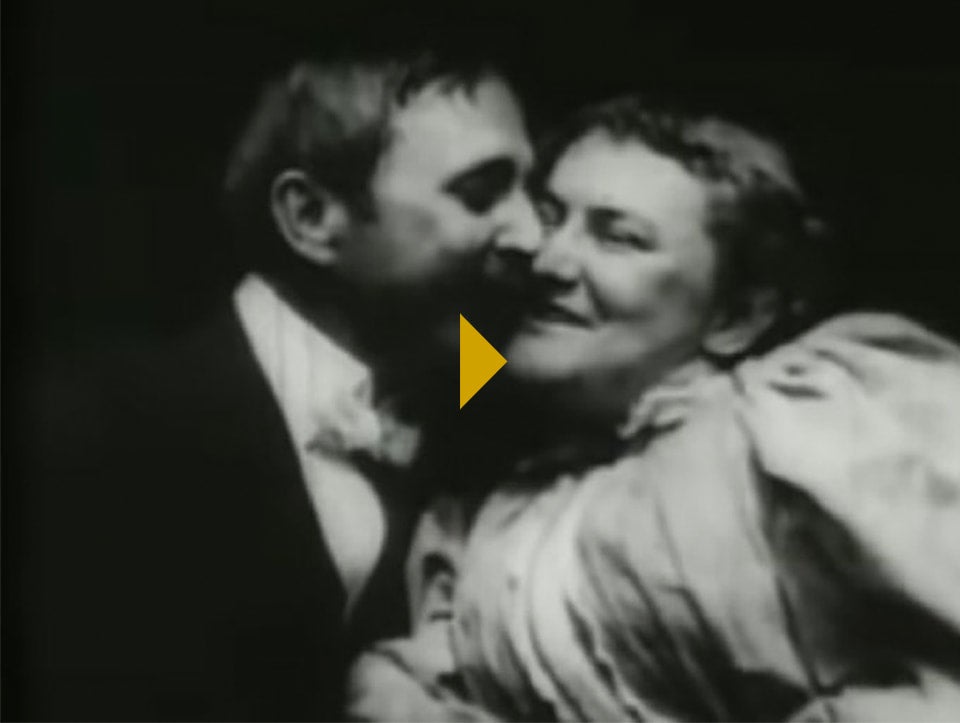
1896:
Thomas Edison’s The Kiss is the first kiss ever shown on-screen
1898
Something Good — Negro Kiss is the first film to show a Black couple kissing, believed to be a political response to Edison’s. The characters also blatently reject common racist stereotypes of the day.
1900s
1900s
1906
Alice Guy-Blaché, the first-ever woman director, makes The Consequences of Feminism, a short film imagining a reversal in gender roles in which women act like pervs and slobs, and — you guessed it! — get away with it.
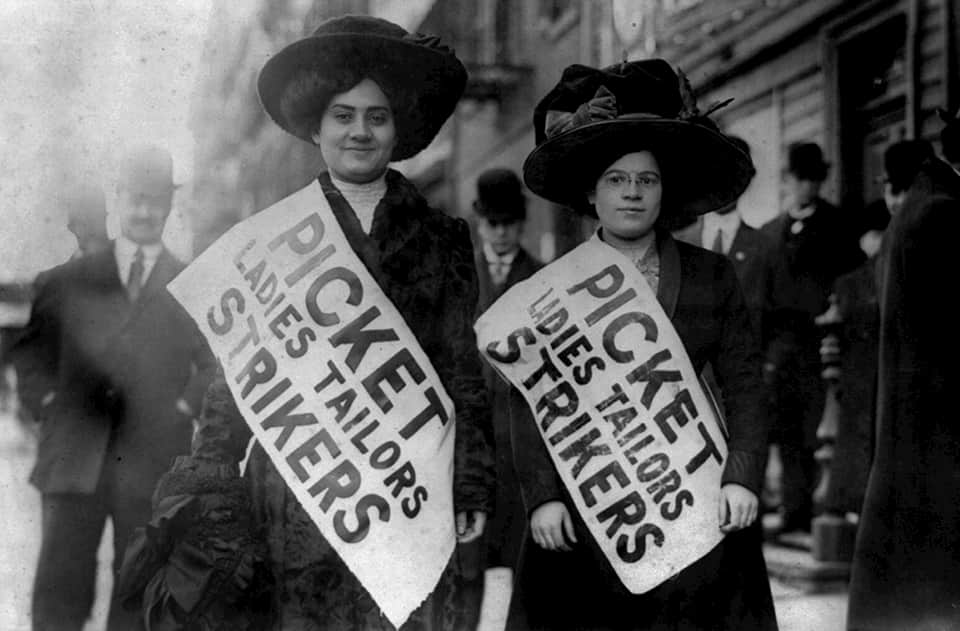
November 1909:
The workers in New York’s shirtwaist factories, who were mostly women, lead the Uprising of the 20,000. Working conditions for everyone vastly improve.
1910s
1910s
1910s-1920s
Hollywood is described as a “manless Eden” due to the large number of women at the epicenter of the film industry. Yes, for real, read about it here.
1914
Mary Phelps Jacob, 19, gets a patent for the “brassiere,” meant to be less painful than the corset. (Love you, Mary, but you’re only kind of correct.)
1916
Lois Weber co-directs Where Are My Children, about a doctor who performs illegal abortions in a poor community. While largely anti-abortion in message, the film is one of the first to touch on the subject and is a huge success — in Boston, 2000 people are turned away from a sold-out opening-night screening.
1916
Lois Weber (yes, the same one), considered on par with D.W. Griffith and Cecil B. DeMille, signs a deal with Universal Pictures, making her the highest-paid director in Hollywood at the time.
1920s
1920s
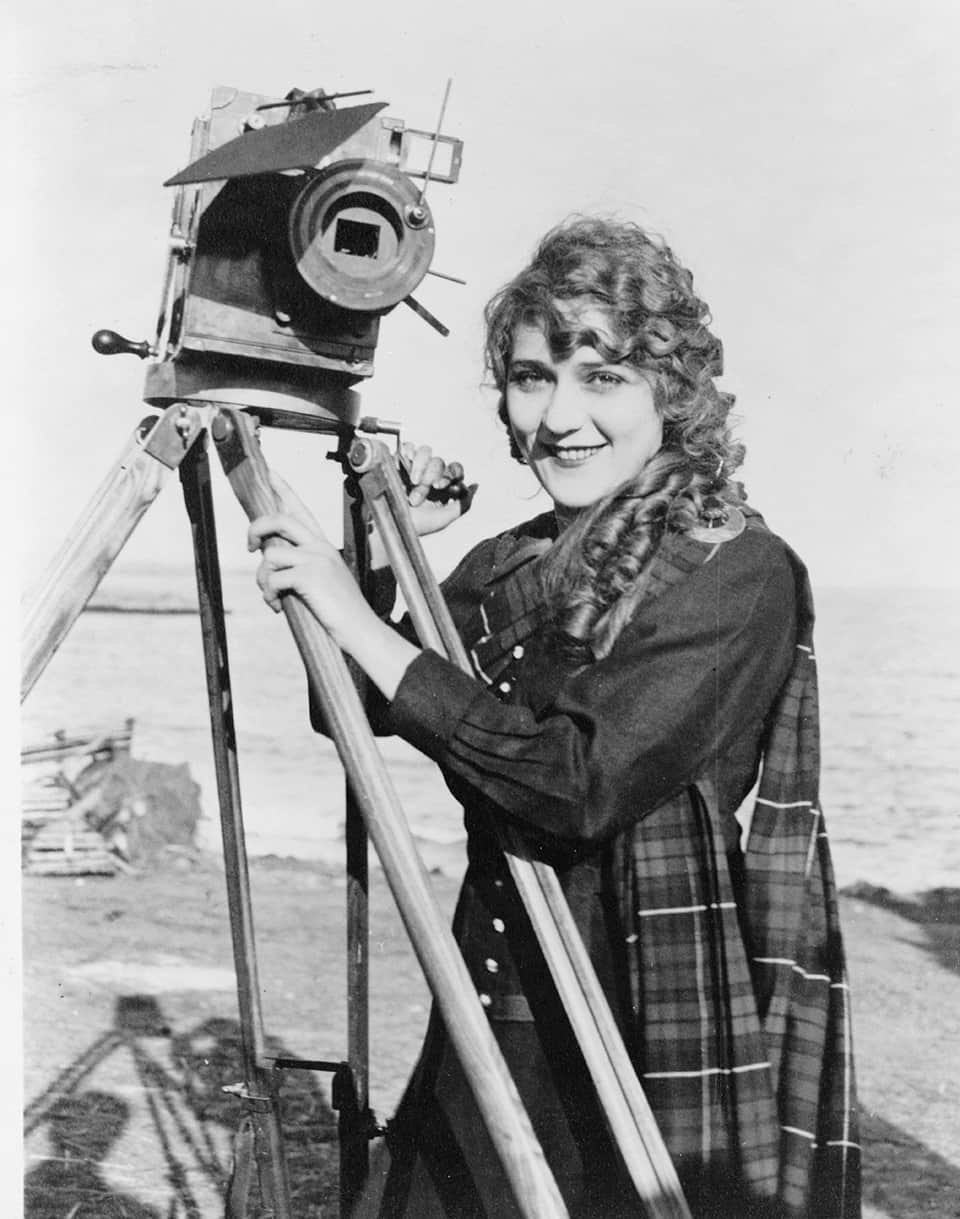
1920s:
Mary Pickford, Hollywood’s first major movie star, becomes the highest paid performer in the industry. She later becomes one of the most powerful show-business executives of the time.
August 18, 1920
Rejoice — the 19th Amendment is ratified, giving women the right to vote.
1922
Tressie Souders directs and releases A Woman’s Error, known for its realistic portrayal of Black life. She is hailed as the first Black woman director, a title shared with her contemporary, Maria P. Williams.
1923
The first version of the Equal Rights Amendment, that says one cannot be discriminated against on the basis of sex, is introduced. Nearly a century later, the ERA has still not been ratified by all 50 states.
1924
Silent sci-fi film The Last Man on Earth imagines a world where men have died out from the “masculinities” epidemic, and there are no gender roles.
1924
Anna May Wong skyrockets to fame as the first Chinese-American movie star, playing stereotypical villains opposite white actresses. Her career in America is cut short, however, when she’s repeatedly passed over for lead roles because of anti-miscegenation laws.
1929-1934
Pre-Hays Code Hollywood heralds a brief window of permissive filmmaking, showing women living with men out of wedlock (gasp!), embracing their sexuality (clutches pearls), and more.
1930s
1930s
1930
Marlene Dietrich, dressed in men’s clothing, finishes off a musical number in Morocco by kissing another woman on the lips. Audiences are s-h-o-c-k-e-d.
1931
The president of the League of Women Voters celebrates the total elimination of all discriminations against women (read: white women).
1932
Amelia Earhart becomes the first woman — and second person ever — to fly solo across the Atlantic Ocean. She tragically disappears on a later flight, creating a mystery that has kept us on our toes for nearly a century.
1933
Hedy Lamarr becomes the first actress to depict an orgasm in a feature film in Ecstasy. The Czech movie is banned in the United States. (Reading this over Wi-Fi? The multifaceted Lamarr also helped invent that.)
1933
Frances Perkins is appointed Secretary of Labor by FDR. Often called the woman behind the New Deal, she was the first woman to serve in a presidential cabinet, and she’d remain the only one until 1953, when Oveta Culp Hobby was named head of the Department of Education.
1934
Josephine Baker becomes the first Black woman to star in a major motion picture (Zouzou). Famous for her scandalous dances, she becomes the most successful American entertainer in France, where she moved to protest racist segregation laws in the U.S. Au revoir, suckers!
1940s
1940s
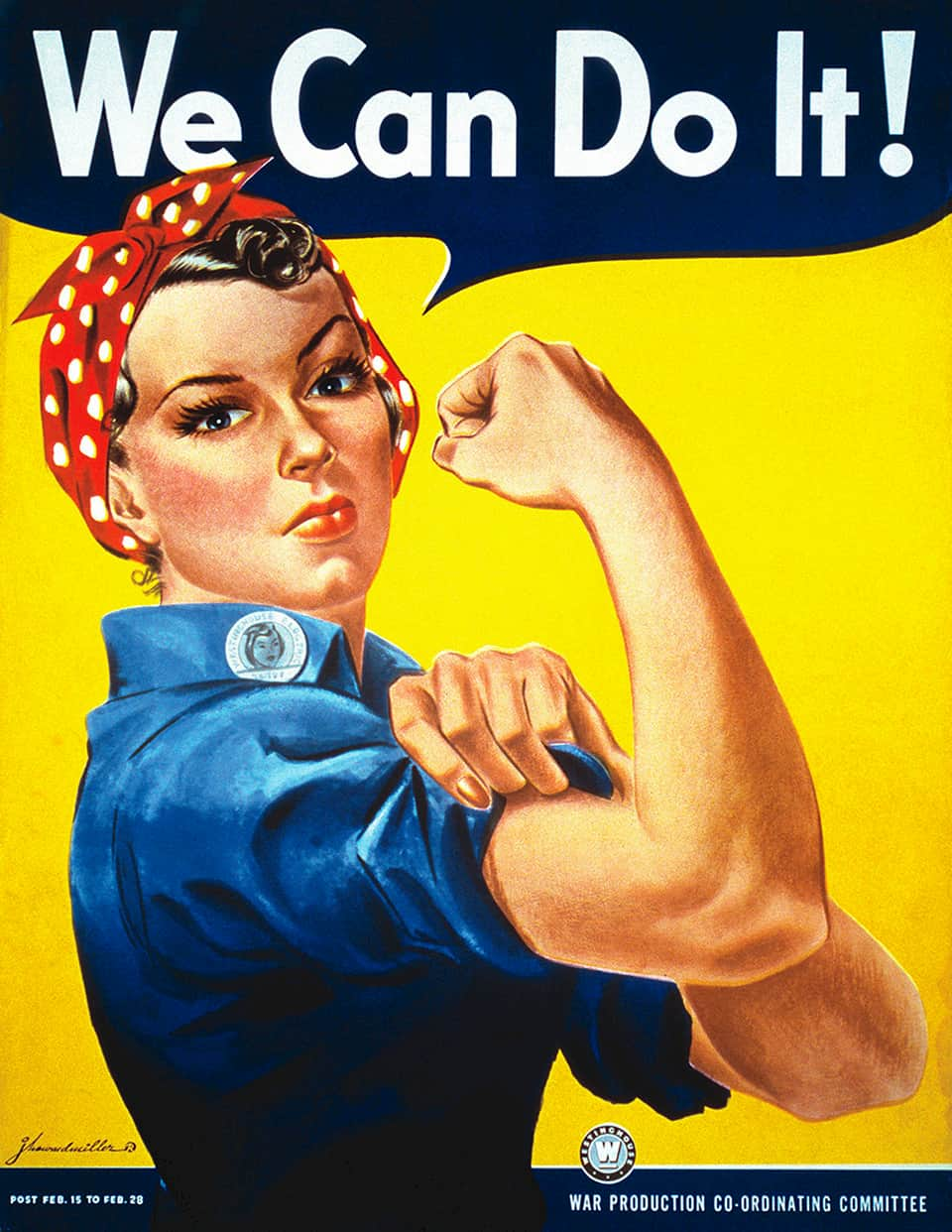
WWII:
Posters of Rosie the Riveter are widely distributed, recruiting women for the defense industry. She instantly becomes a national celebrity, and she’s a lot more persuasive than Uncle Sam.
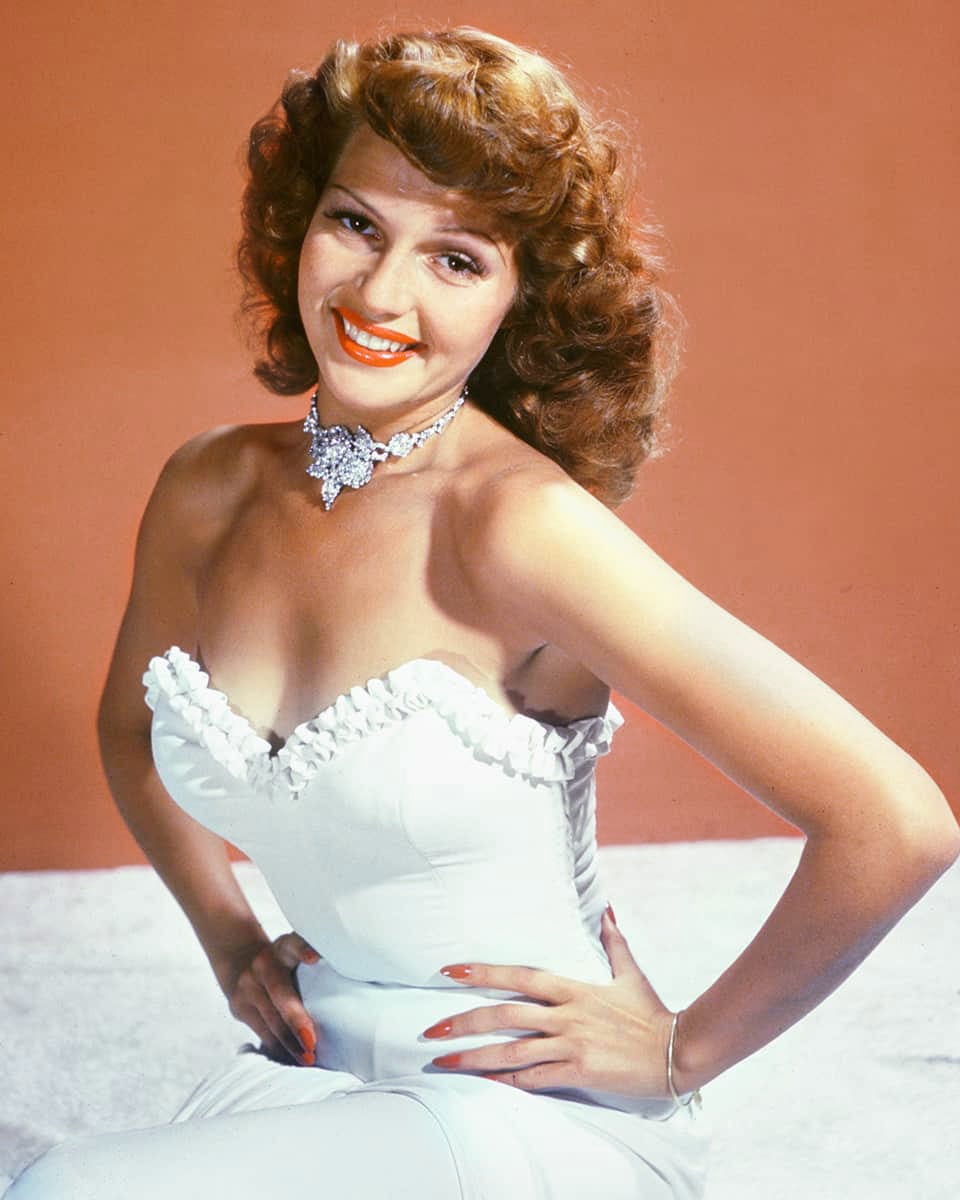
1940s:
Taking advantage of the switch to Technicolor, Rita Hayworth popularizes red manicures at a time when red makeup, including nails, is typically worn by sex workers.
1940s
Femmes fatales — complicated women with agency and without marriage plots — dominate film noirs like The Maltese Falcon.
1940
Hattie McDaniel becomes the first Black woman to win an Oscar for playing Mammy in Gone with the Wind, a controversial role that later came to embody damaging Black stereotypes. Still, her win is remembered as a trailblazing moment for representation.
1941
Bette Davis becomes the first woman elected president of the Academy of Motion Picture Arts and Sciences. She resigns after eight weeks when she realizes the role is exclusively symbolic and empty.
1944
Olivia de Havilland wins a lawsuit against Warner Bros., challenging an unfair labor loophole that traps actors in unfairly long contracts.
1948
Pauline Frederick becomes the first full-time TV newswoman correspondent — nearly a decade after the start of broadcast news.
1948
Mary Kay and Johnny features the first pregnant woman on TV. At the time, the word pregnant was taboo to say on television, even for news anchors.
1949
The Goldbergs debuts, one of the first sitcoms and television programs ever written and directed by a woman. Gertrude Berg is also the first to win new Emmy category, Best Actress (over Betty White).
1950s
1950s
1950
All About Eve and Sunset Boulevard address the realities of ageism in Hollywood and mark a new era for women on screen.
1951
I Love Lucy debuts, cementing Lucille Ball as a comedy icon acting opposite her real-life husband, Cuban-American Desi Arnaz — and showing us a couple sleeping in the same bed.
1952
Christine Jorgensen is the first American to publicly undergo gender confirmation surgery. Decades later, Donald Trump seeks to roll back protections against trans Americans.
1953
Marilyn Monroe stars in Gentlemen Prefer Blondes, encouraging generations of women to see salvation in a box of blonde hair dye.
1953
Oscar-winner Loretta Young presents The Loretta Young Show. It is the first-ever anthology series hosted by and starring a woman. Young also produced the program.
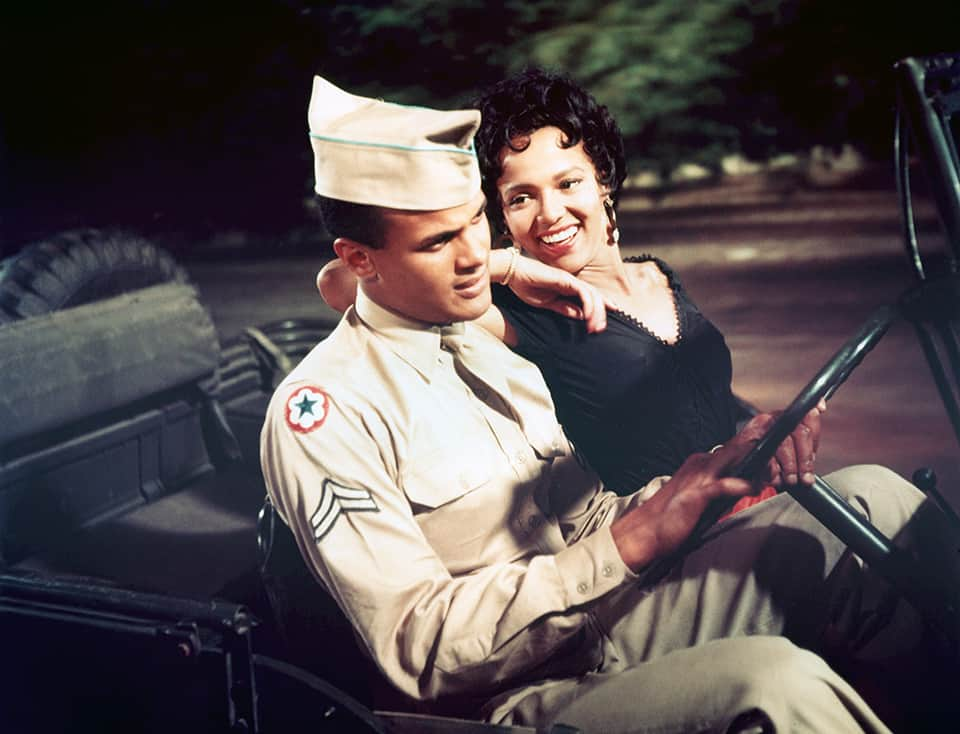
1955:
Dorothy Dandridge is the first Black woman to be nominated for Best Actress at the Oscars for her role in Carmen Jones. She loses to Grace Kelly in A Country Girl.
1957-1958
Leave It To Beaver and The Donna Reed Show premier, codifying pop culture’s ideal housewife and mother. Donna Reed staff writer Barbara Avedon would go on to create Cagney & Lacey.
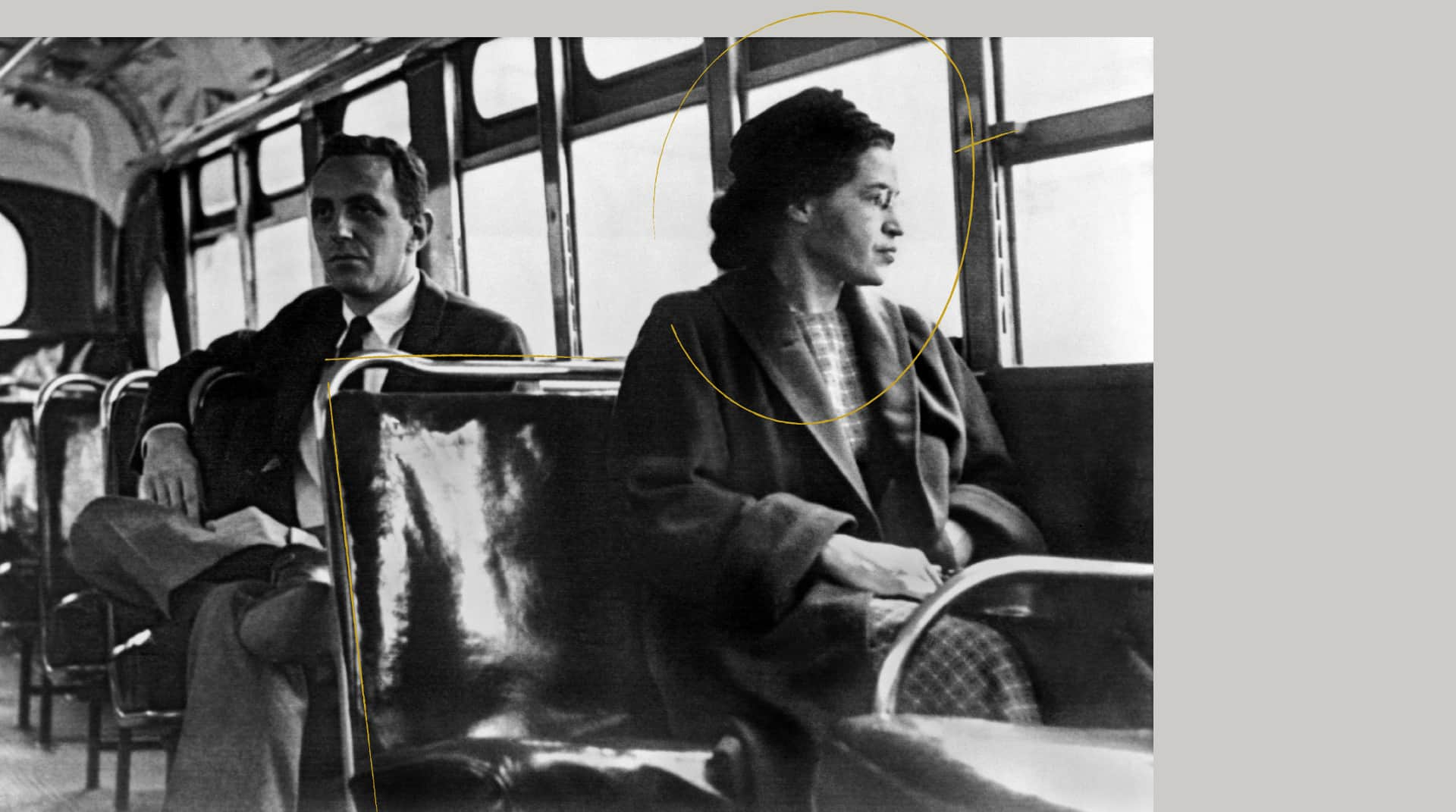
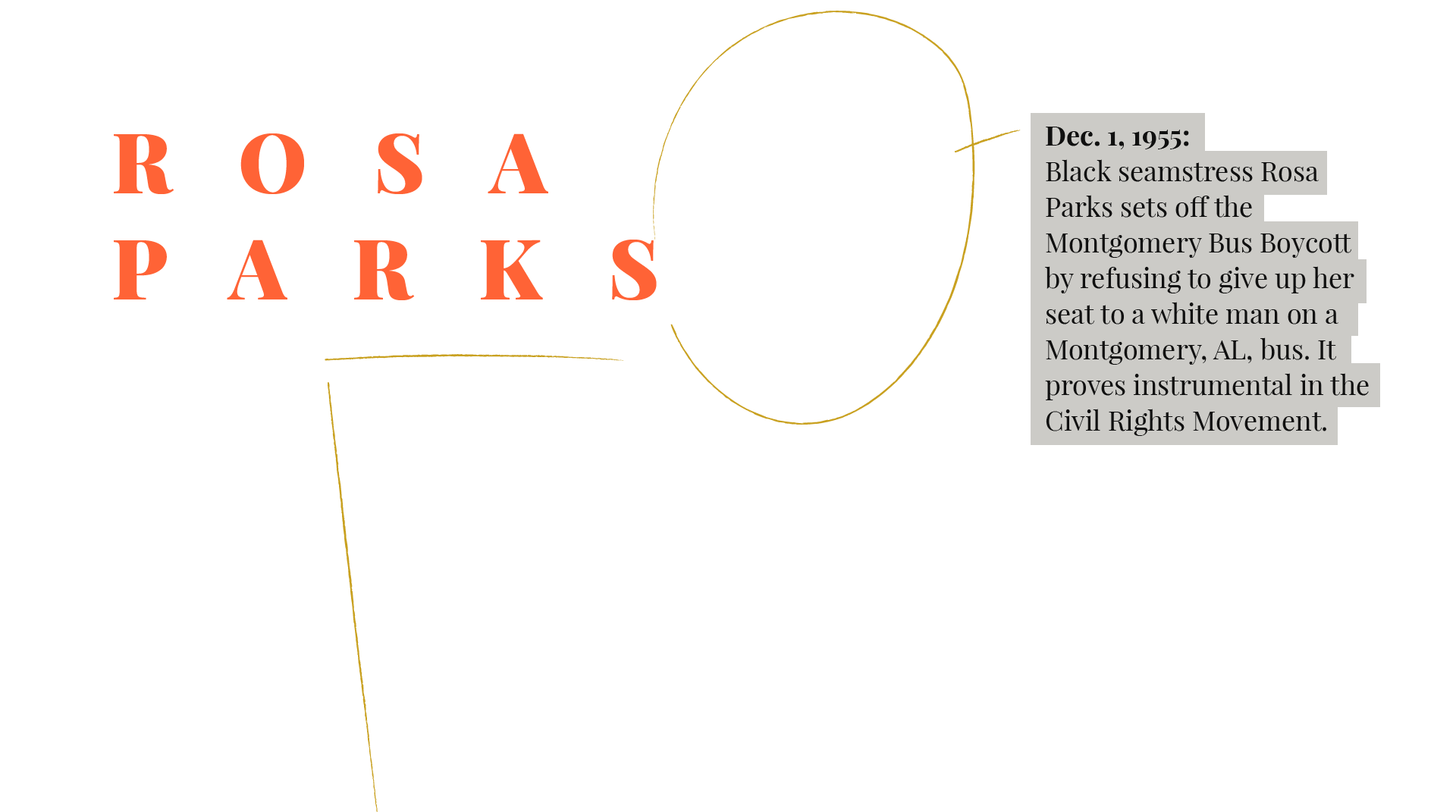
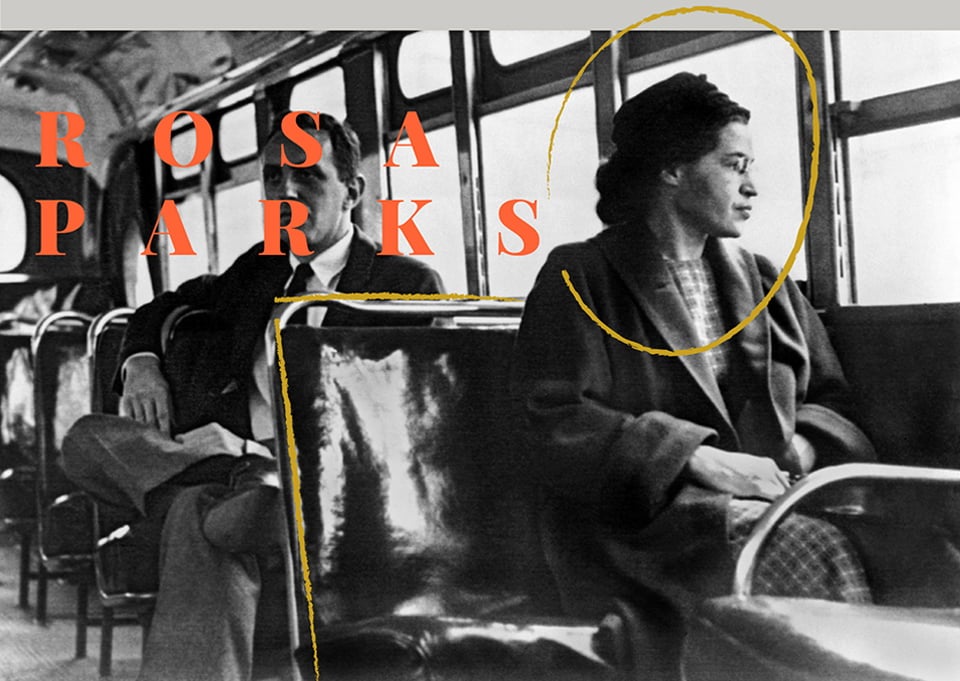
Dec. 1, 1955:
1960s
1960s
1961
Audrey Hepburn gives a defining portrayal of an unlikely sex worker (yes, watch it again) as Holly Golightly in Breakfast at Tiffany’s.
1963
Betty Friedan’s The Feminine Mystique, a seminal feminist text speaking mostly to middle-class white women who have been discouraged from seeking jobs outside of the household, is published. Three million copies are sold in three years.
June 10, 1963
President Kennedy signs the Equal Pay Act into law, prohibiting sex-based wage discrimination between men and women performing the same job in the same workplace.
1963
Cicely Tyson is the first Black woman to star in a TV drama, East Side/West Side. She played a secretary — not the mammy trope established in Gone with the Wind.
1964
One Potato, Two Potato features a still-rare depiction of interracial romance, setting the stage for the more famous Guess Who’s Coming To Dinner in 1967.
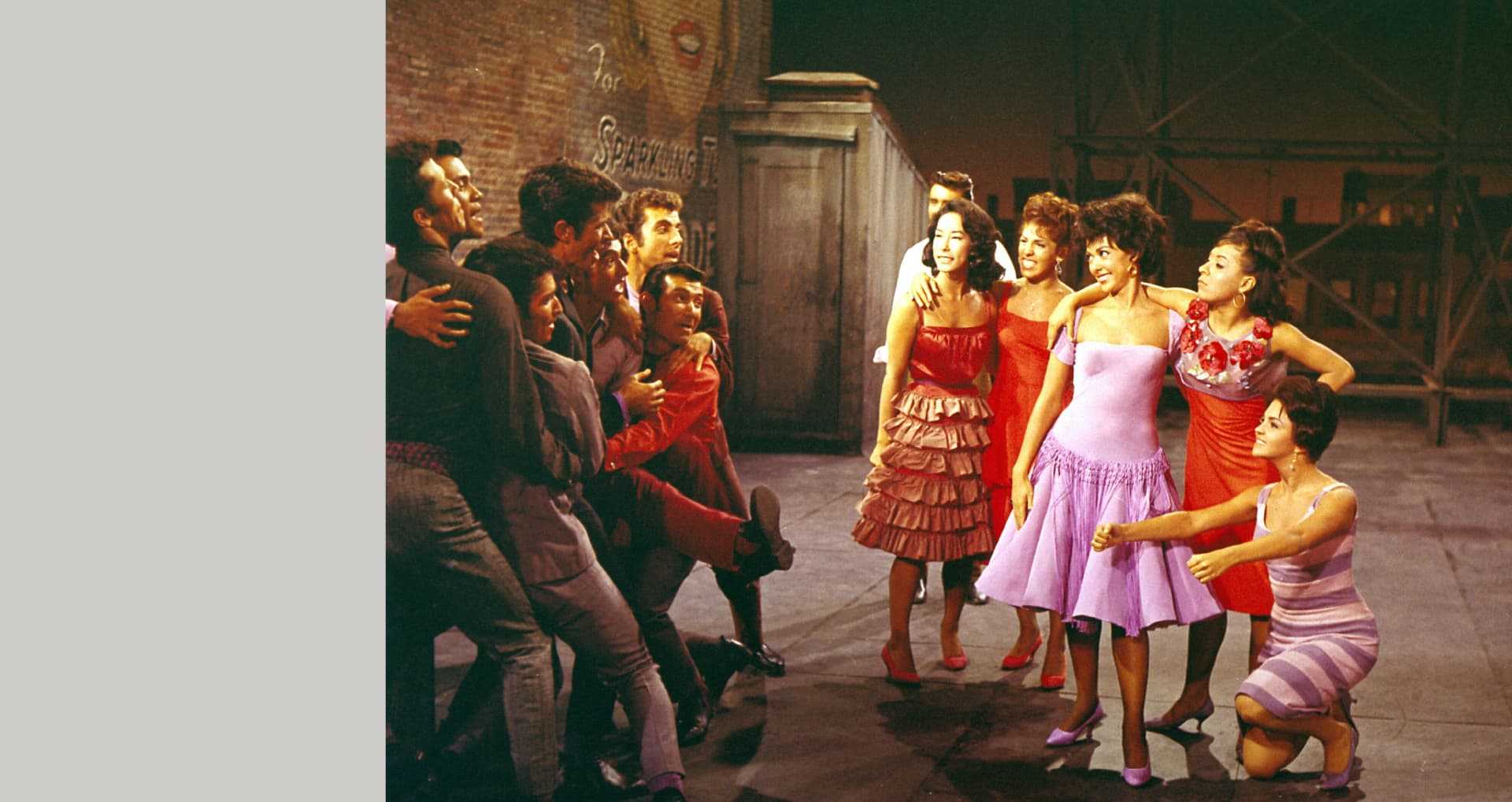
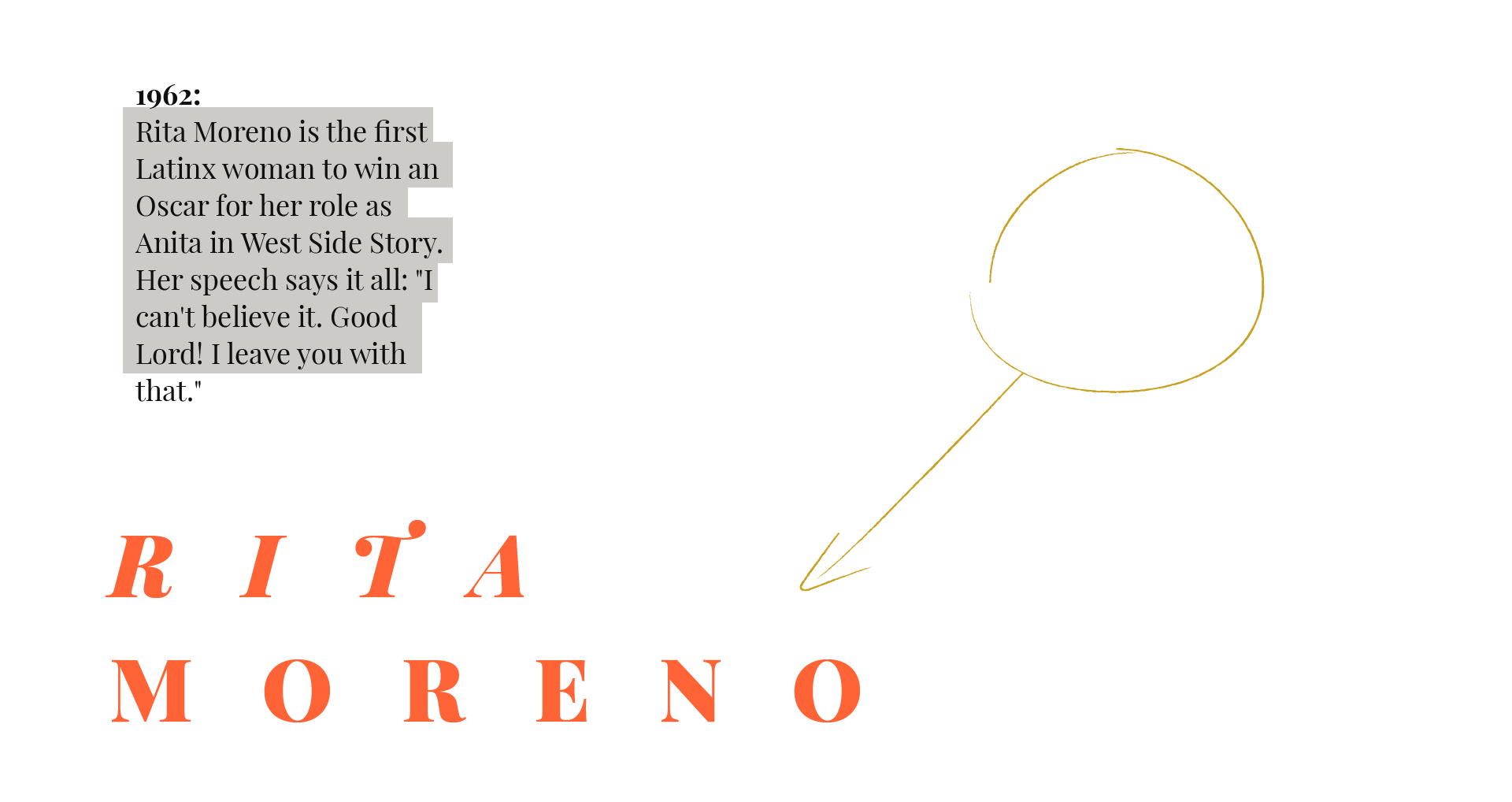
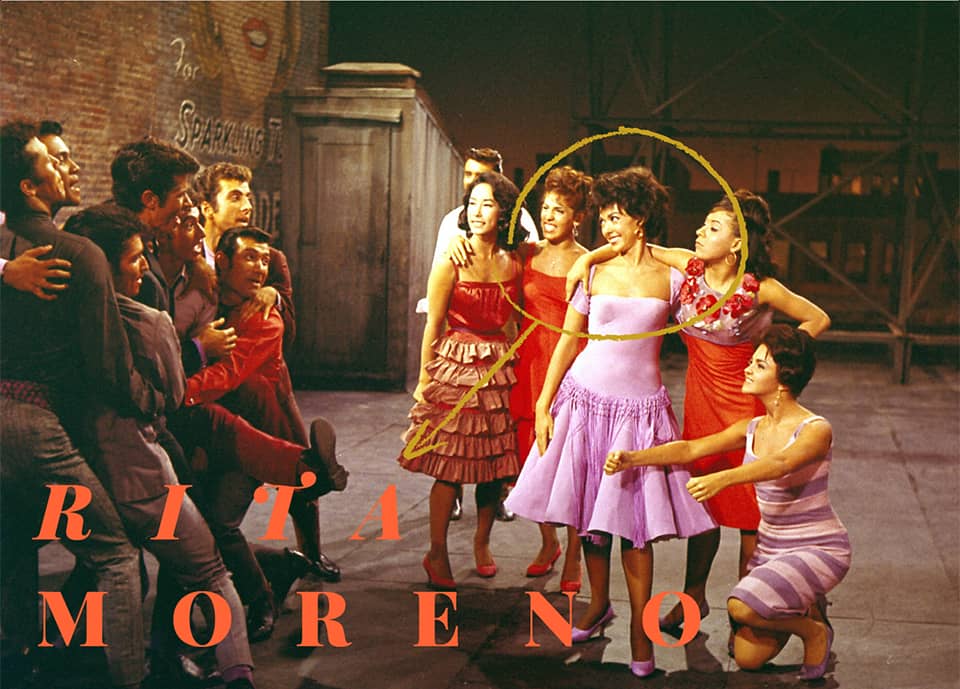
1962:
Rita Moreno is the first Latinx woman to win an Oscar, for her role as Anita in West Side Story. Her speech says it all: "I can't believe it. Good Lord! I leave you with that."
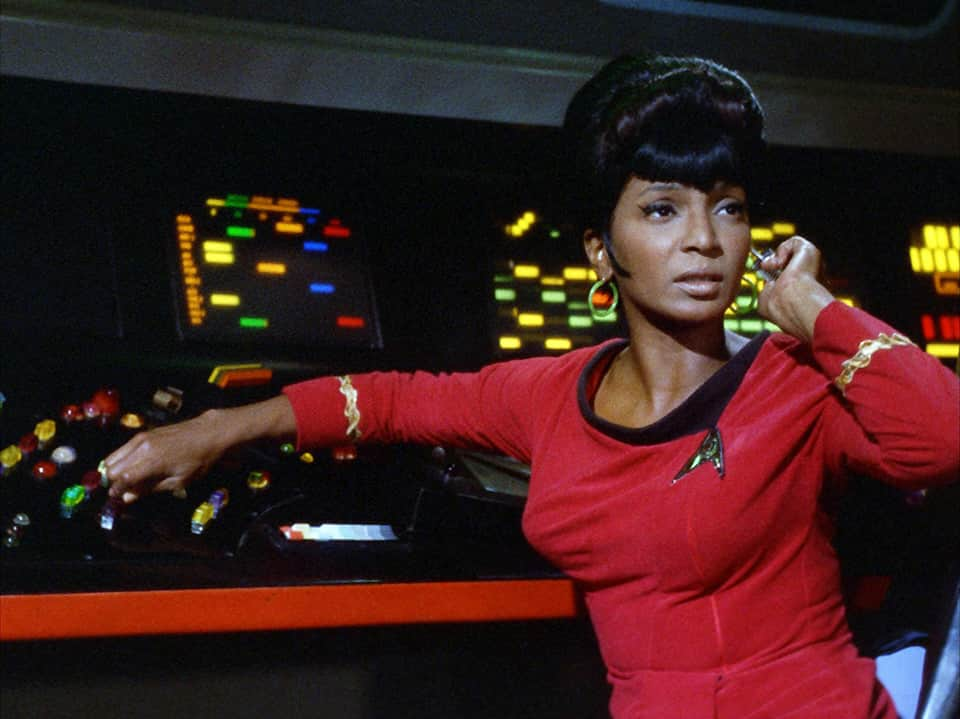
1966:
Star Trek introduces Nichelle Nichols as Lieutenant Uhura, one of the first Black female characters on TV not portrayed as a maid.
1966
That Girl, about an independent woman finding her way in New York City, premieres. Time to fly your kite in celebration.
1967
Pauline Kael changes modern movie criticism with her magnum opus on Bonnie and Clyde, explicitly stating that what happens in the movie is a reflection of what’s happening in the real world, using language the average reader (okay, fine, the average New Yorker reader) could understand.
1967
The Carol Burnett Show, a variety show hosted by actor and comedian Carol Burnett, premieres. Mama really is on a roll! *Ear pull*
1968
Shirley Chisholm becomes the first Black woman elected to Congress. In 1972, she earns another first when she enters the Democratic presidential primary.
1968
Julia, a sitcom about a widow (Diahann Carroll) raising her children, is lauded as a trailblazer, avoiding most stereotypes about Black single moms.
1970s
1970s
1970
Gail Fisher is first Black woman to win a Primetime Emmy, 21 years after the award show first began.
1971
French actresses and filmmakers including Catherine Deneuve and Agnes Varda sign the Manifesto of the 343, calling for abortion rights in France, and attempt to reclaim the word “slut.” Two years later, the U.S. Supreme Court would rule on Roe v. Wade.
1971
All in the Family shows TV’s first miscarriage.
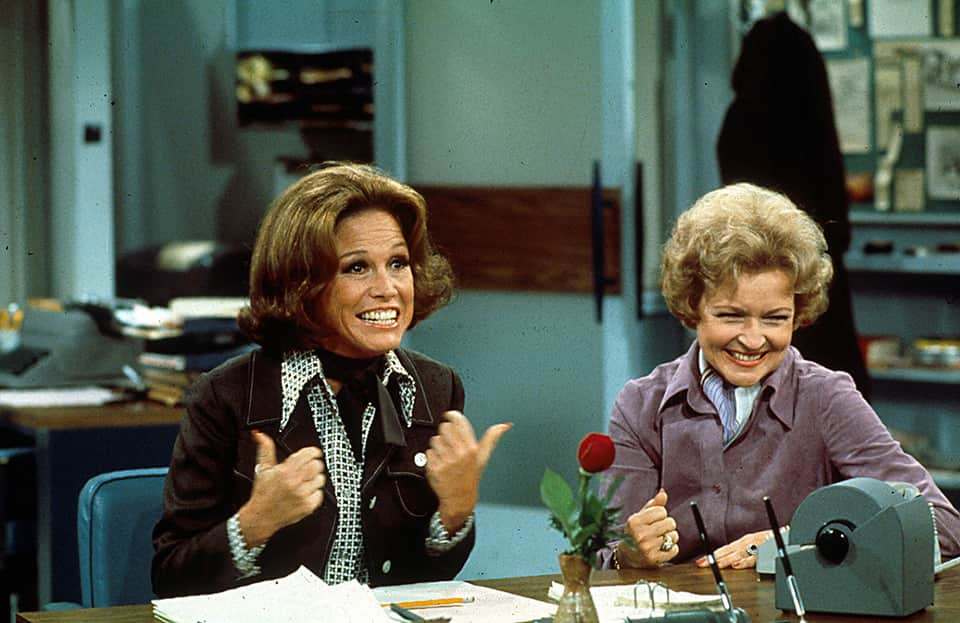
1972:
Mary Richards on The Mary Tyler Moore Show is the first single woman to announce she’s on the pill. Get over it, dad.
1972
Maude depicts primetime TV’s first legal abortion, as it was legal in New York state at the time. One year later, following the passage of Roe v. Wade, an All My Children storyline includes TV’s first federally legal abortion.
June 23, 1972
President Nixon signs Title IX of the Education Amendments Act, which prohibited discrimination on the basis of sex for any education program receiving federal funding. This threw many doors open, but immediately impacted female athletes in colleges.
Jan. 22, 1973
In its landmark 7-2 Roe v. Wade decision, the U.S. Supreme Court declares that the Constitution protects a woman’s legal right to an abortion.
1974
Angela Morley, the composer for The Little Prince, becomes the first openly transgender person to be nominated for an Oscar.
October 1974
Congress passes the Equal Credit Opportunity Act, prohibiting credit card companies from denying women applying for credit.
1977
Lina Wertmüller is the first woman director nominated for an Oscar for Seven Beauties. She loses but eventually receives an honorary award in 2019.
1978
Robin Tyler does a Showtime comedy special, becoming the first out lesbian to appear on national TV.
1978-79
Capable woman warriors Princess Leia (Carrie Fisher) in Star Wars and Ripley (Sigourney Weaver) in Alien forge a new path that turns sharply away from the damsel in distress in action movies.
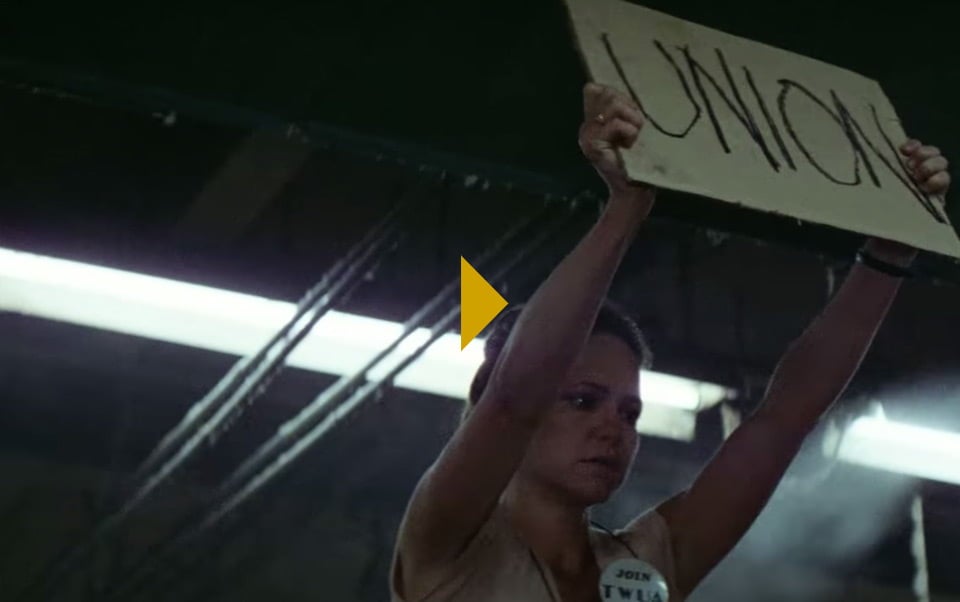
1979:
In Norma Rae, Sally Field stars as a woman who gets involved in the labor union at her textile mill. Hollywood shows they like her — they really like her! — when she wins an Oscar for her performance.
1980s
1980s
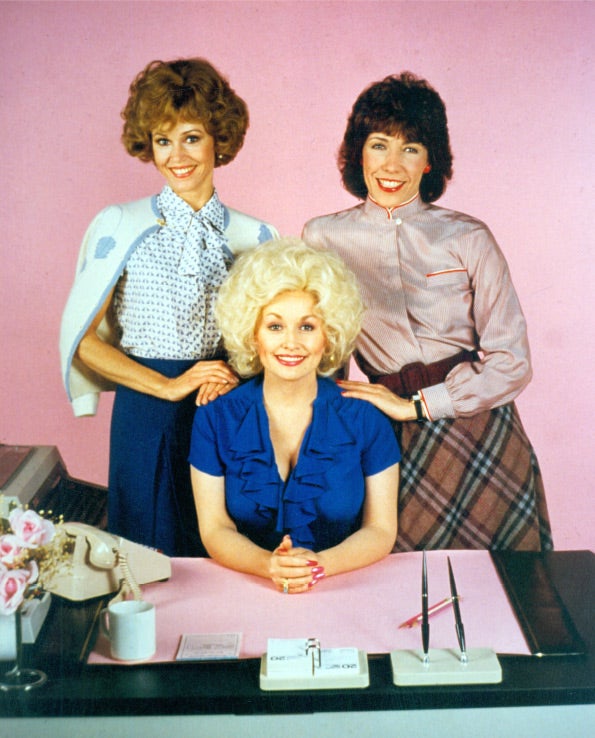
1980:
Jane Fonda, Dolly Parton, and Lily Tomlin are just trying to make a living in a man’s world that’s all taking and no giving in 9 to 5. It’s wildly successful, grossing more than 10 times its original budget.
1981
192 years after the founding of the Supreme Court, Sandra Day O’Connor becomes the first woman ever to serve as a justice.
1982
The Equal Rights Amendment falls short of ratification. Three decades later, it still remains one state away from passing.
1982
Kathleen Collins makes Losing Ground, the first feature film directed by a woman of color in America since the 1920s.
1983
The Directors Guild of America sues Warner Bros. and Columbia Pictures, thanks to the efforts of the “Original Six,” a group of women directors intent on fighting discrimination in Hollywood. The suit is later dismissed on a technicality.
1984
TV’s first major look at a woman president premieres: Hail to the Chief starring Patty Duke. It runs for a whopping seven episodes.
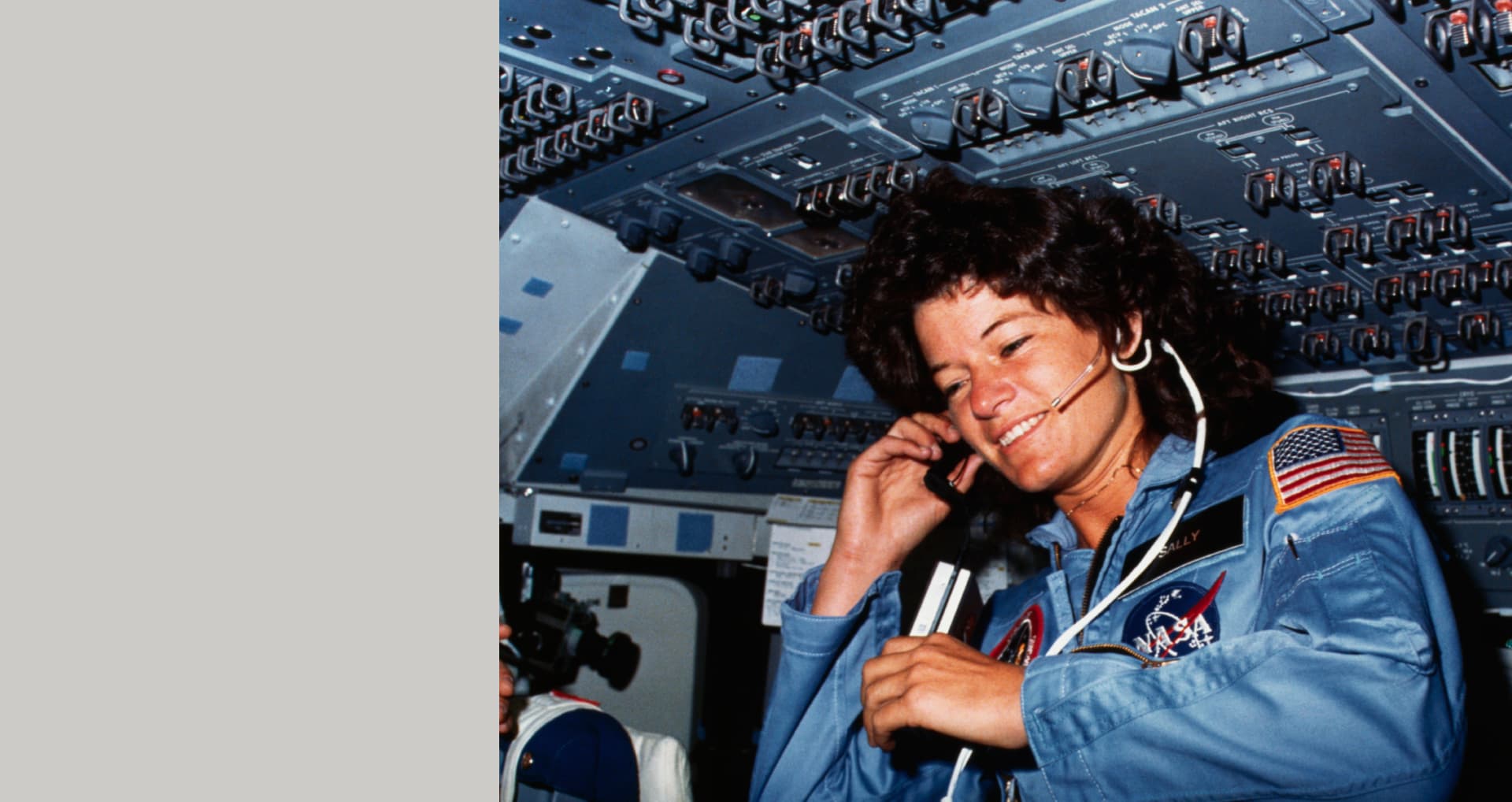

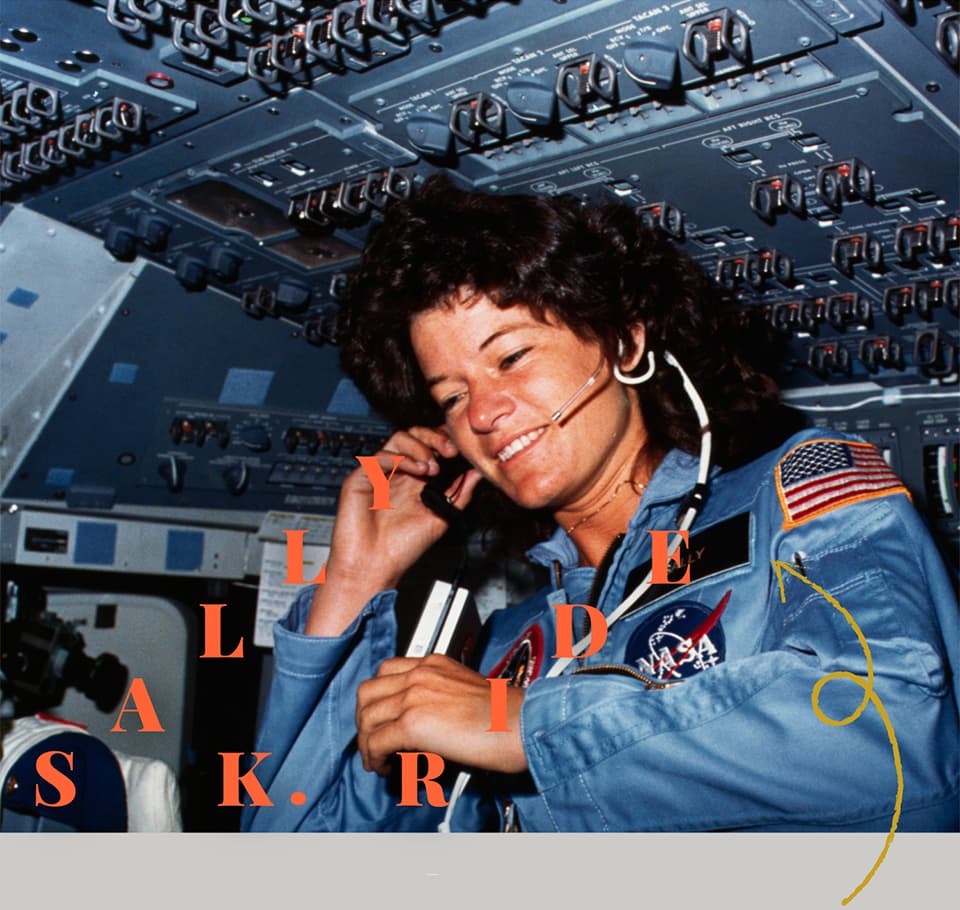
1983:
Sally K. Ride is the first American woman sent into space. NASA — no joke — is confused about how many tampons to provide her for a 1-week journey.
1985
Alison Bechdel’s Dykes To Watch Out For comic strip writes about what would become the Bechdel Test, now the standard for gauging the autonomy of women characters on-screen.
1985
Golden Girls premieres, starring four older women at the center of their own story — and remaining very horny along the way.
1985
Danitra Vance becomes the first Black woman to join SNL as a repertory player. She is still the cast’s only out Black lesbian.
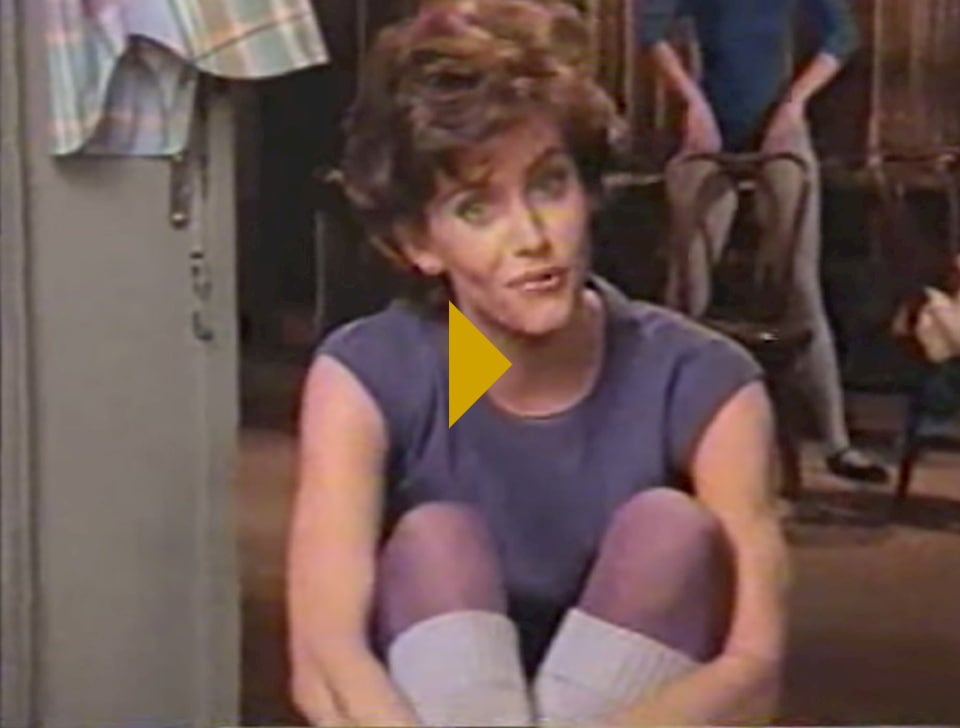
1985:
Courteney Cox is first woman to say “period” on TV during a commercial for Tampax.
1986
Oprah Winfrey becomes the first Black woman to host a national talk show. She would also become the first to own and produce one.
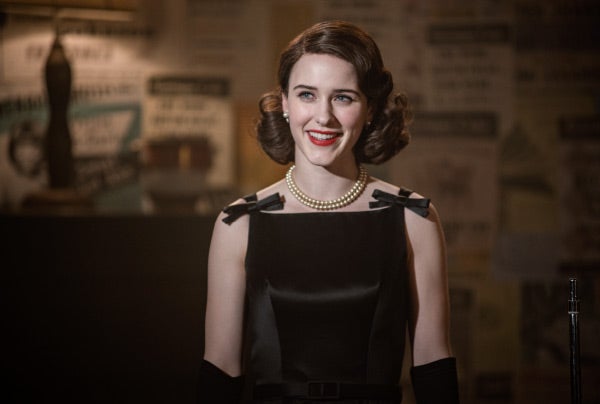
1986:
Joan Rivers becomes the first woman to ever host her own late-night talk show. While short-lived, her signature raunchy style changed comedy for everyone and inspired the titular character on The Marvelous Mrs. Maisel.
1988
Roseanne — created and produced by Roseanne Barr — premieres, making a foulmouthed, working-class mom an icon. (We won’t bring up the reboot.)
1988
Murphy Brown premieres. She’s a reporter and single mom who finds herself becoming the stand-in for every woman whom angry men can no longer control.
1988
HeartBeat on ABC stars Marilyn McGrath (Gail Strickland), TV’s first main character who is a lesbian in a long-term relationship. It is cancelled after two seasons.
1990s
1990s
1990
21 Jump Street airs TV’s first lesbian kiss. But, Fox cuts off the bottoms of the women’s faces, effectively censoring the smooch.
1990
Beverly Hills 90210 debuts on Fox, ushering the beginning of the modern teen drama. High school sophomore Brenda losing her virginity to Dylan scandalizes local affiliates.
1991
L.A. Law airs the far more famous “lesbian kiss episode” — full faces and all.
1991
Anita Hill testifies before the Senate Judiciary Committee that Supreme Court nominee Clarence Thomas had sexually harassed her at work. Thomas denies the allegations, and is still confirmed.
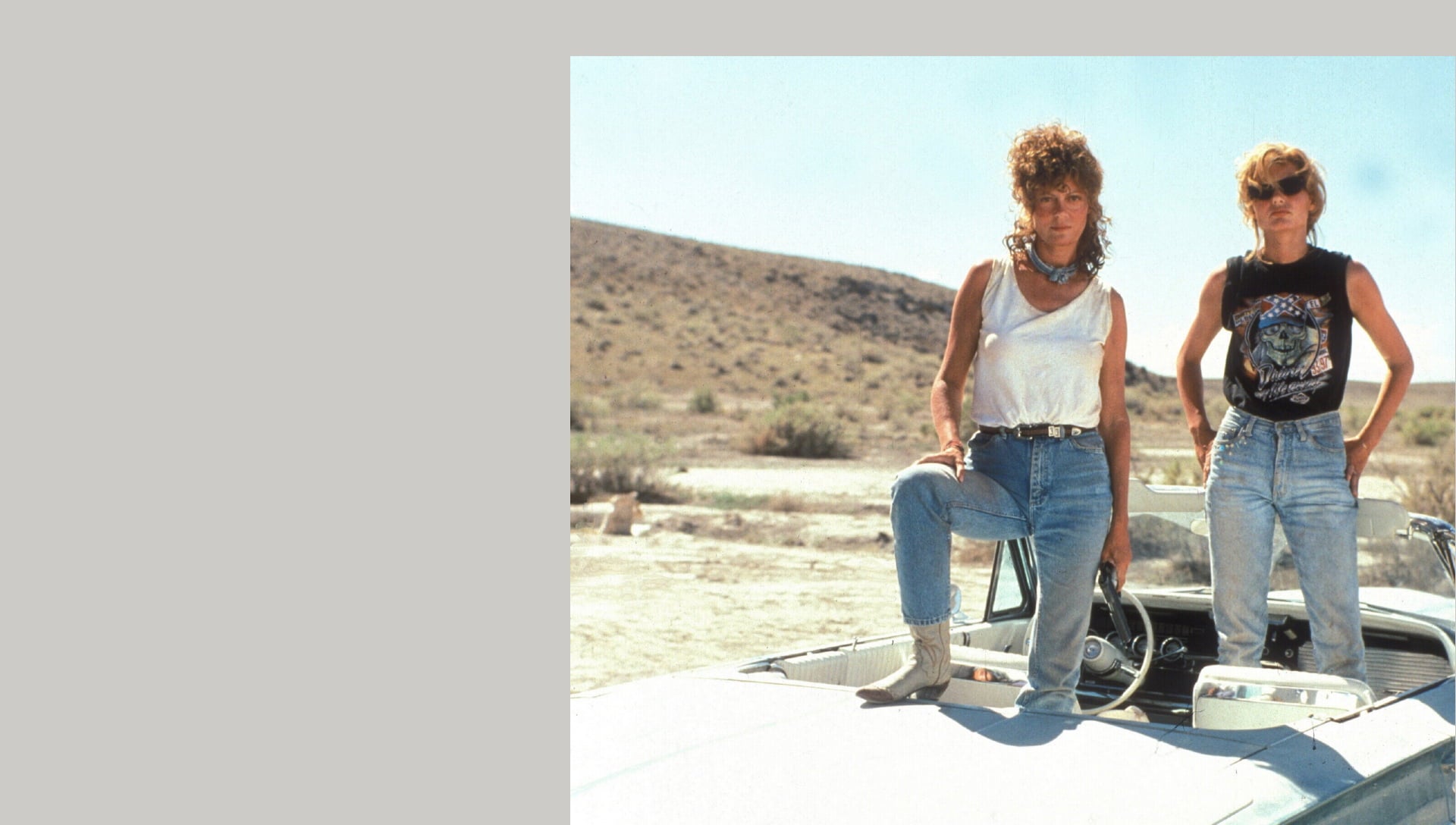
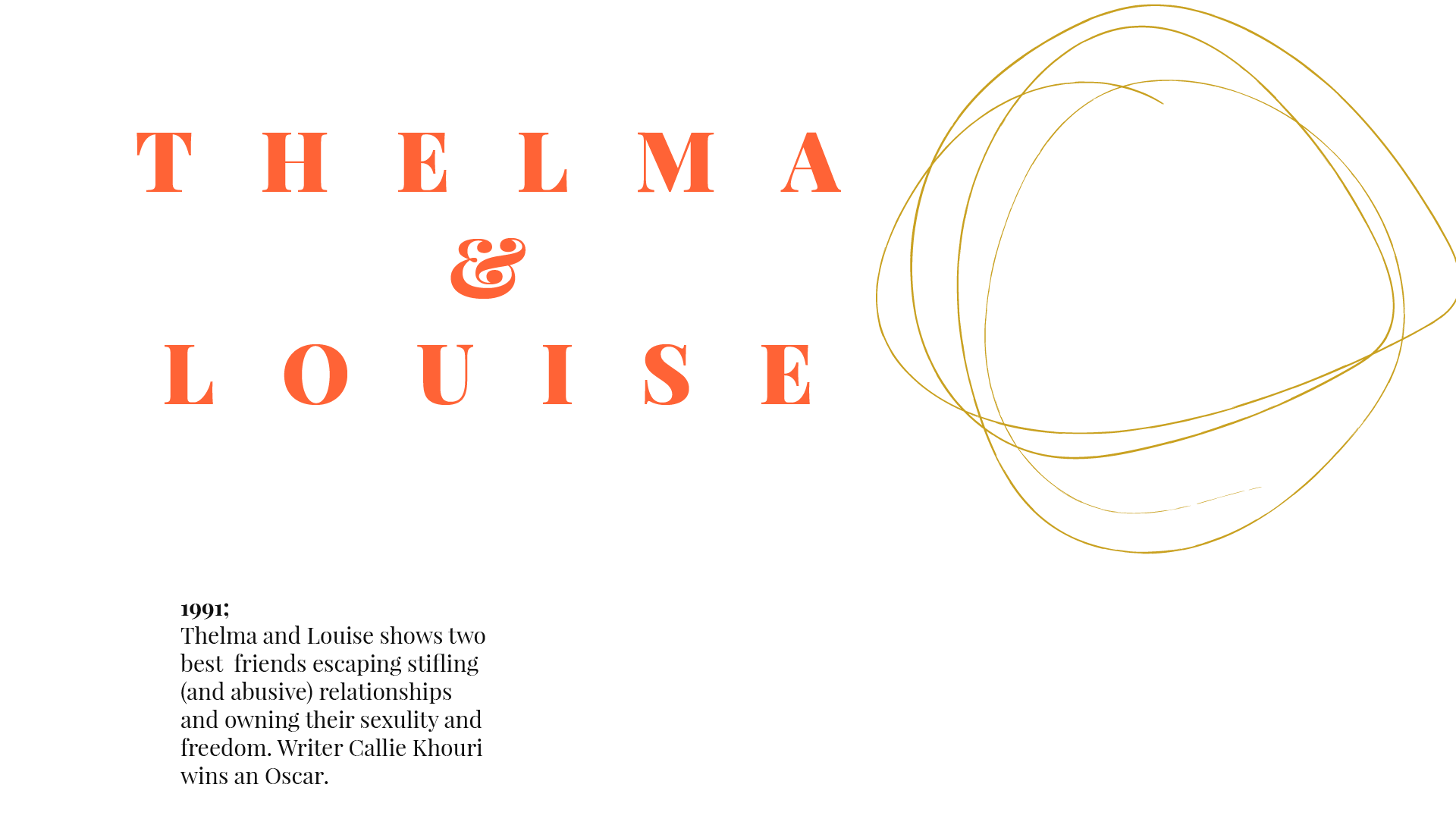
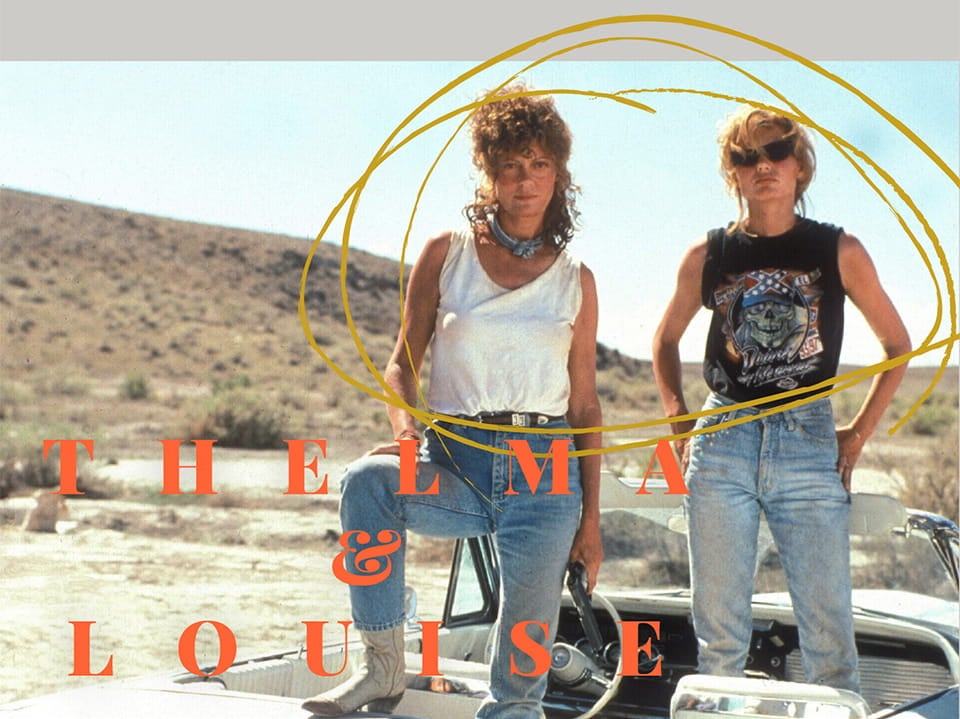
1991:
Thelma and Louise shows two best friends saying fuck off to their asshole partners to drive off into the sunset. First-time writer Callie Khouri wins an Oscar.
1992
Seinfeld’s Elaine Benes takes part in “The Contest,” a bet to see who can go the longest without masturbating. She loses after sharing a cab ride with JFK, Junioooooor.
1992
Dan Quayle uses Murphy Brown’s single motherhood plot to rant about the degradation of the American family. The show reminds him he can’t spell the word potato.
1992
Carol J. Clover coins the term “final girl” in her book Men, Women, and Chainsaws: Gender in the Modern Horror Film, referring to the last woman left alive in a horror movie (she’s usually a virgin who can’t drive).
1992
Jaye Davidson is nominated for his now-controversial role as trans woman Dil in The Crying Game, a step towards the modern goal that trans actors should have ownership of their own stories.
1993
The Joy Luck Club becomes the first studio movie with an all-Asian American, mostly women cast, something that wouldn’t be repeated until 2018’s Crazy Rich Asians. The film coincides with a huge rise in Chinese immigration.
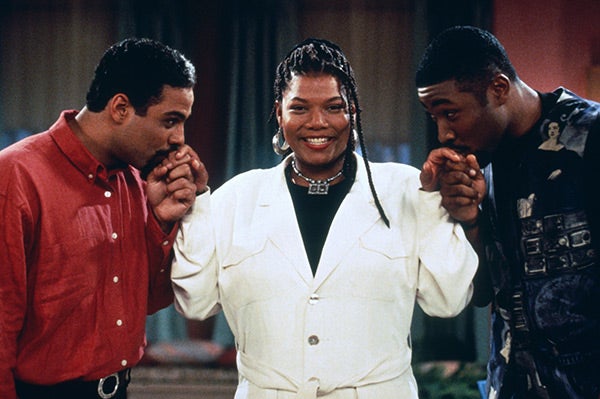
1993:
Yvette Lee Bowser, 27, is the first Black woman to develop her own primetime series with Living Single. Check-check-check it out!
1993
Connie Chung becomes first woman of color to co-anchor a network newscast on CBS Evening News.
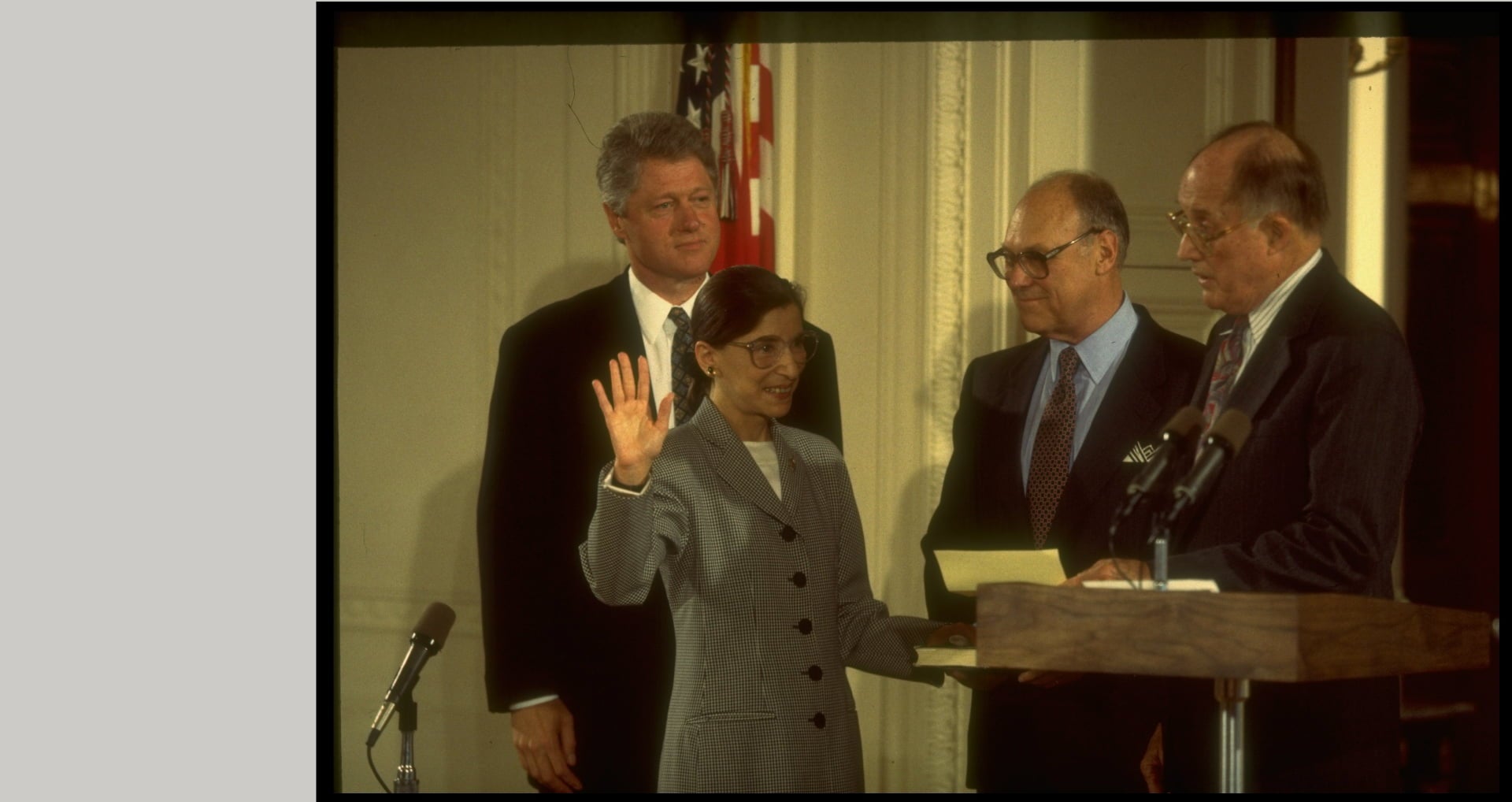
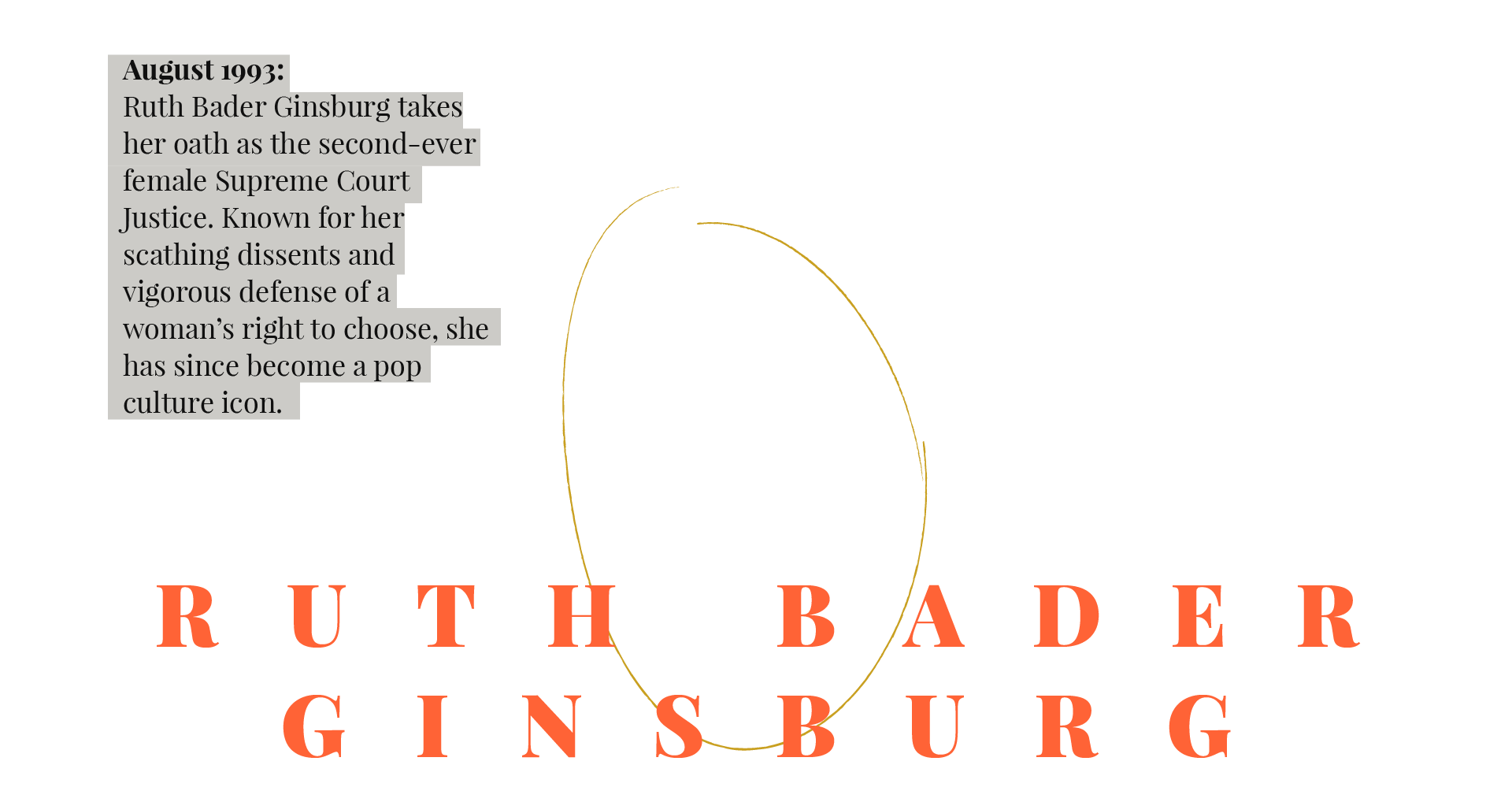
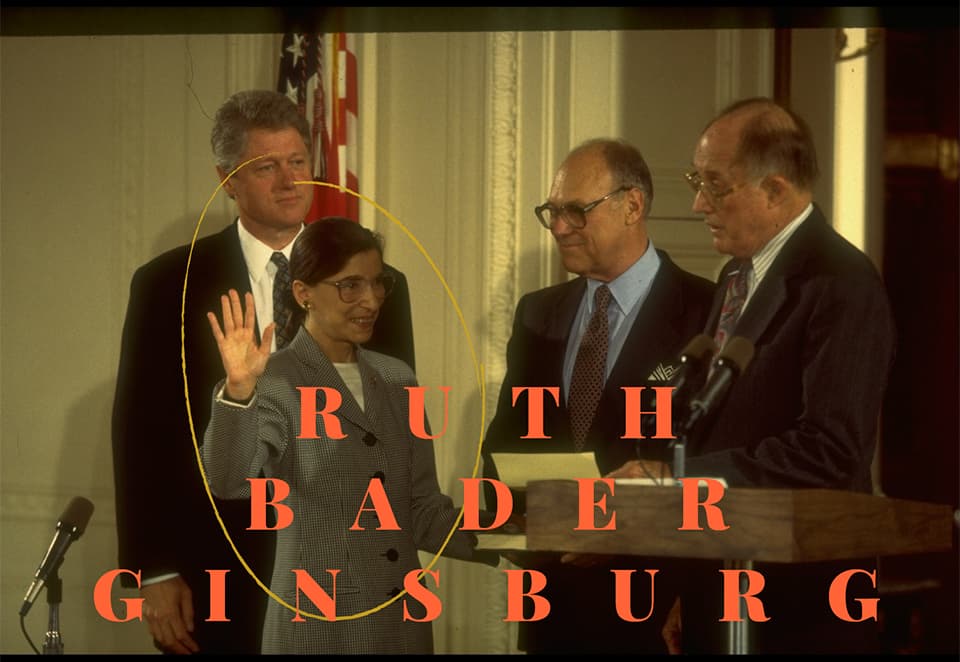
August 1993:
Ruth Bader Ginsburg takes her oath as the second-ever female Supreme Court Justice, after fighting for decades as a lawyer to extend civil rights, protect abortion rights, and end gender discrimination. She also invents statement collars. This is a fact.
1994
Darnell Martin is the first Black woman to direct a studio film with I Like It Like That. The movie is also Lauren Vélez’s film debut.
1994
Margaret Cho’s All American Girl premieres, the first network series led by an Asian-American cast. ABC tries to resuscitate flagging ratings by replacing the cast with white people, which is, uh, extremely not the point of the show.
1995
Shannon Faulkner is the first woman to attend South Carolina military college The Citadel in its 152-year history. In 1996, four more women breach The Citadel.
1996
Rachel and Monica fight over the last condom on Friends. Rock, paper, scissors decides who gets the better night in.
1997
Demi Moore shaves her head in GI Jane, kissing repressive beauty standards goodbye and cementing the female buzzcut as the definitive haircut for ballbusters.
1997
Singer Brandy stars in Cinderella, joining 1995’s Pocahontas in subverting the idea that classic fairytale princesses can only be white.
1997
Ellen DeGeneres comes out in “The Puppy Episode,” becoming the first out lesbian to play an out lesbian on TV. Yep, she’s gay!
1998
Sex and the City premieres on HBO, inspiring a generation of sexually liberated women who can’t help but wonder if they’re a Samantha, Miranda, Carrie, or Charlotte.
1999
Jamie Babbit satirizes conversion therapy in But I’m A Cheerleader. Natasha Lyonne’s role skewers the absurdity of the practice, not to mention the inevitability and frank hotness of same-sex love.
2000's
2000s
2000
Love & Basketball shows a talented Black athlete having a shot at her dream career and a man on the sidelines cheering her on.
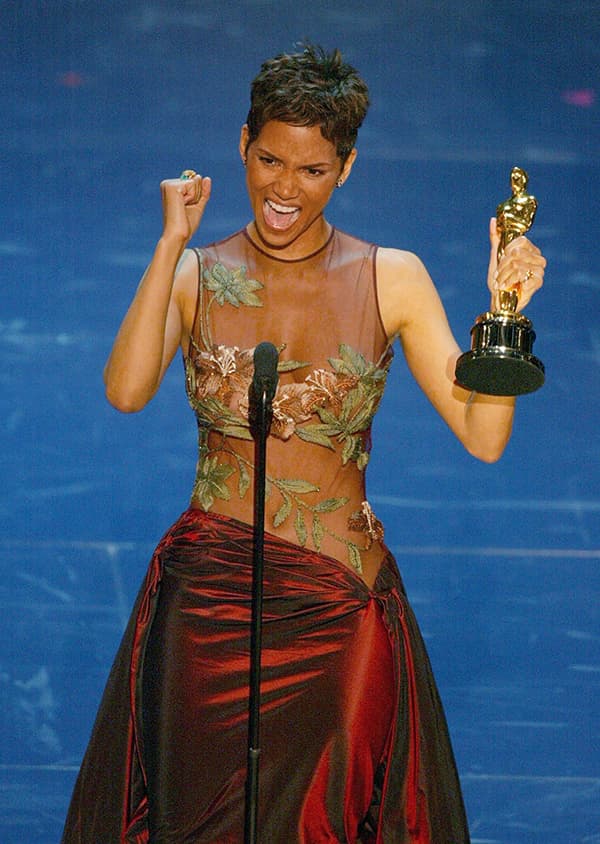
2002:
In an unforgettable and teary Oscars moment, Halle Berry becomes the first Black woman to win Best Actress for Monster’s Ball.
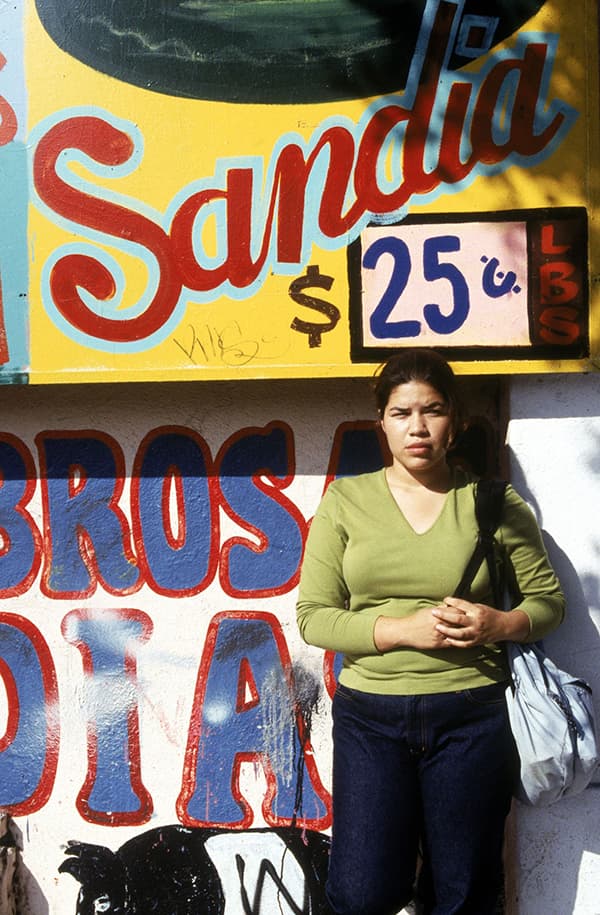
2002:
America Ferrera makes her debut in Patricia Cardoso’s Real Women Have Curves, a coming-of-age story that is said to have set the stage for Greta Gerwig’s Lady Bird in 2017.
2003
Catherine Hardwicke’s Thirteen mesmerizes and terrifies an entire generation of precocious teenage girls and their parents. It’s co-written by 13-year-old Nikki Reed.
2004
Natalie Portman plays the first Manic Pixie Dream Girl in Garden State, a mantle taken up by Kirsten Dunst in Elizabethtown and Zooey Deschanel in 500 Days Of Summer. By 2013, people are over the sexist trope.
2004
Geena Davis launches the Geena Davis Institute on Gender in Media, spotlighting industry-wide inequality.
2004
The L World, a series about the lives of queer women in Los Angeles, premieres on Showtime. It gets a revival in fall 2019.
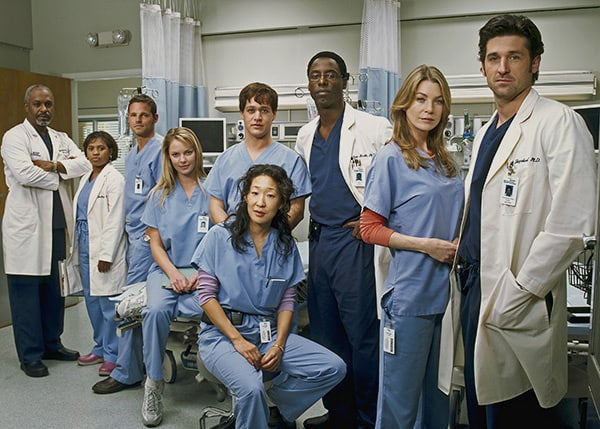
2005:
Grey’s Anatomy premieres with protagonist Meredith Grey (Ellen Pompeo) having a one-night stand, launching Shonda Rhimes’ colorblind casting feminist empire.
2007
After 218 years, Nancy Pelosi becomes the first woman Speaker of the House in Congress, placing her second in line for the presidency.
2007
Candis Cayne is TV’s first openly trans actress to play a recurring trans character on a network TV show: ABC’s Dirty Sexy Money.
2007
Alex (Olivia Wilde) and Marissa (Mischa Barton) kiss on The O.C., marking one of the first major bisexual moments on a mainstream show.
2008
Katherine Heigl describes her uncomfortable experience on the set of Knocked Up in Vanity Fair. Between that drama and reported tension on the set of Grey’s Anatomy, she is all but blacklisted from Hollywood after she’s pegged as “difficult.”
2009
President Obama signs the Lily Ledbetter Fair Pay Act, giving victims of pay discrimination an outlet to reclaim lost wages and bring sexist employers to justice.
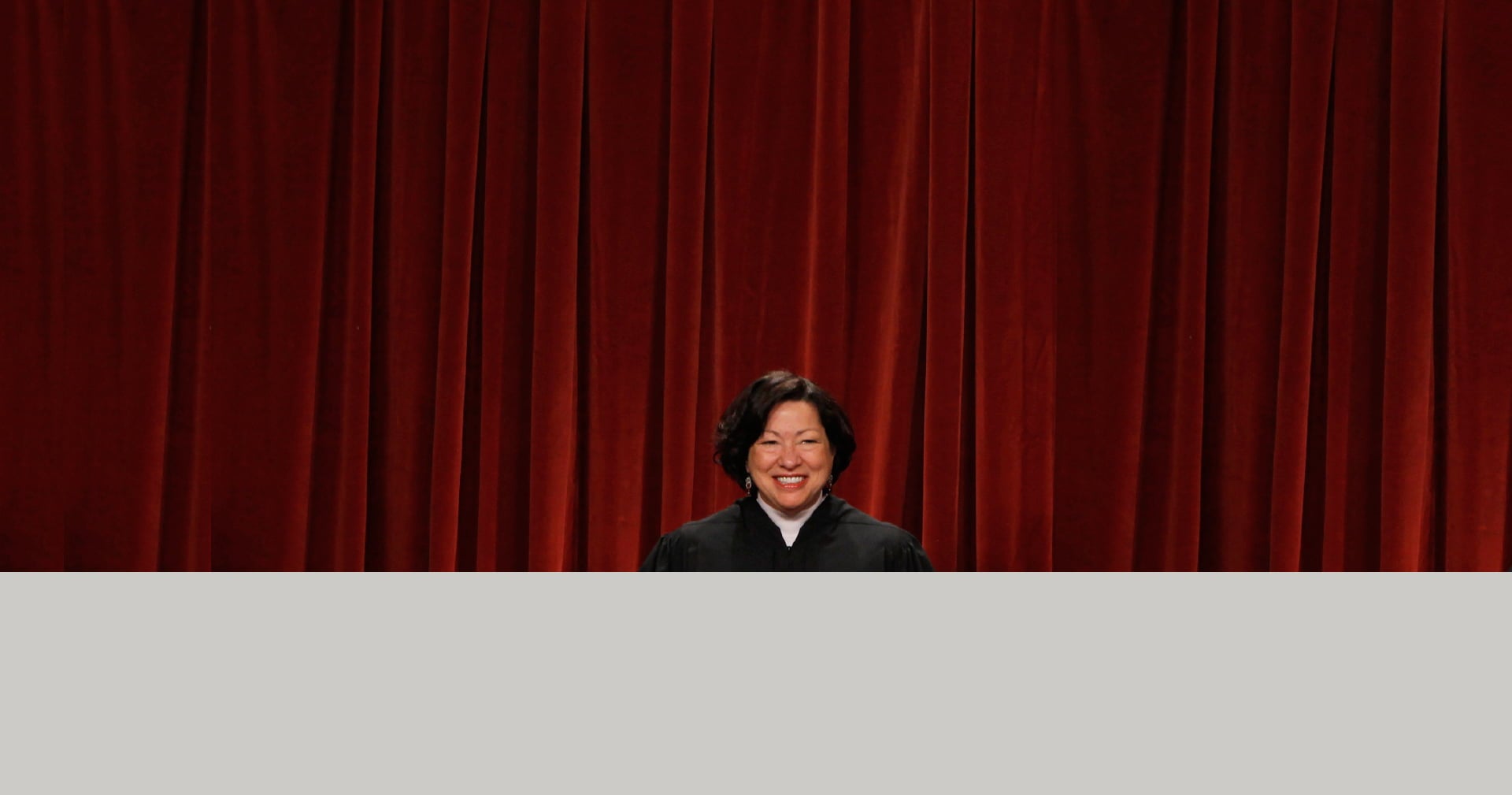
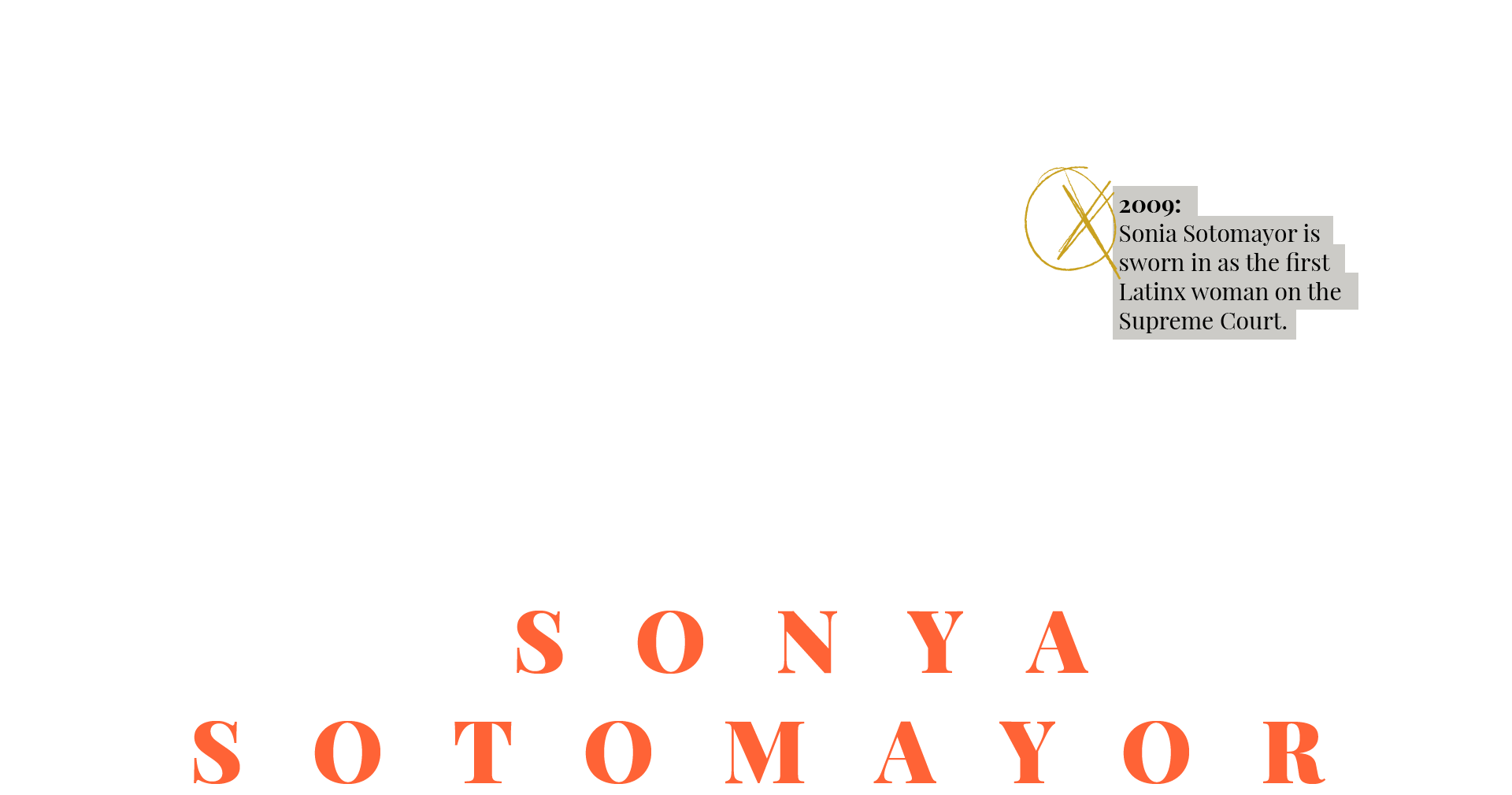
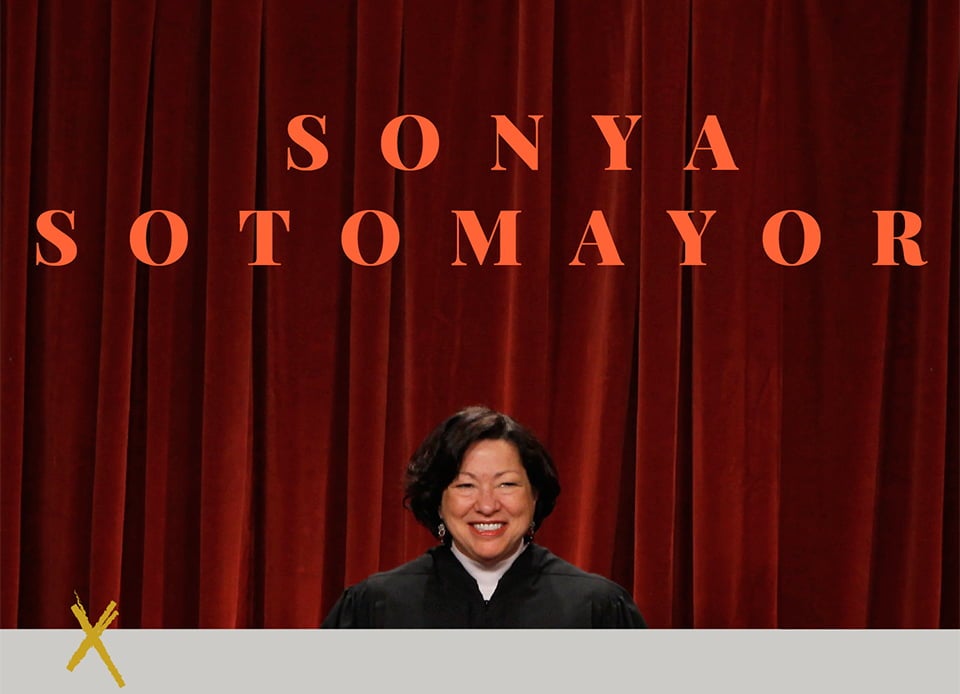
2009:
Sonia Sotomayor is overwhelmingly sworn in as the first Latinx woman on the Supreme Court in a 68-31 Senatorial vote.
2010s
2010s
2010
Kathryn Bigelow is the first woman to win an Oscar for Best Director for Iraq war epic The Hurt Locker. We’re still waiting for the next one, Academy.
2011
Activists Sonya Barnett and Heather Jarvis launch SlutWalk, a international movement protesting rape culture and victim blaming. The slogan “still not asking for it” — stating that wearing cute clothes isn’t a reason why women get raped — becomes a battle cry.
2011-2012
It’s the year of the titural Girl on TV as Girls, New Girl, and 2 Broke Girls all premiere. Absolutely none of these women have it “together” — and that’s the point.
2012
Bridesmaids, written by Kristen Wiig and Annie Mumolo, is a hit, proving that audiences are hungry for female ensemble comedies and that women do in fact shit, even in wedding dresses, even in the street.
2012
Scandal’s Kerry Washington is the first Black woman to lead a primetime drama in decades, proving the ultimate power of Shondaland. It’s handled.
September 2012
California becomes the first of 18 states and the District of Columbia to ban the harmful practice of conversion therapy. (In a blow to its LGBTQ+ legacy, New York state is now reconsidering its ban.)
2013
Jennifer Lee becomes the first woman director to have a film gross over $1 billion with Frozen. Turns out everyone wants to build a snowman.
2013
Laverne Cox plays a trans woman on Orange Is the New Black. She becomes the first out trans woman to be nominated for an Emmy.
2014
Gone Girl immortalizes the “Cool Girl” trope, and we can all stop pretending to like wings and sports.
2014
An email containing damning evidence of the pay disparity between the male and female stars of American Hustle emerges in the Sony cyberattacks. Star Jennifer Lawrence writes an essay that becomes a rallying cry for women around the country.
2014
Viola Davis removes her makeup and wig as Annalise Keating in How To Get Away With Murder, a showcase of the rarely portrayed private daily ritual of a Black women getting ready for bed.
2014
Cristela Alonzo becomes the first Latinx woman to create and star in her own network show: ABC’s Cristela. It runs for just one season.
2016
Hillary Clinton becomes the first woman presidential nominee of a major political party. There’s no need to remind people of what happened in November.
January 21, 2017
Four million women swarm the streets across the country for the first Women’s March, the largest single-day protest in U.S. history.
October 2017
The #MeToo movement, originated by Tarana Burke, starts trending after sexual assault allegations are made against movie producer Harvey Weinstein.
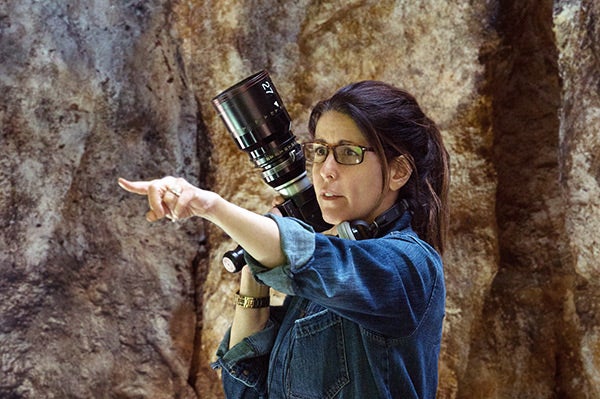
2017:
Wonder Woman leaps into No Man’s Land and smashes box office records. Patty Jenkins becomes the highest paid woman director in Hollywood.
2017
Hidden Figures, which celebrates the overlooked achievements of Black women scientists at NASA, is an awards season darling, earning three Oscar nominations.
2017
Lena Waithe becomes the first Black-American woman to win the Primetime Emmy Award for Outstanding Writing for a Comedy Series for her work on Master of None.

2017:
Marvelous Mrs. Maisel debuts, winning 8 Emmys in its first season — mazel! The Academy accepts Gilmore Girls mastermind Amy Sherman-Palladino’s work as more than fluff.
2017
Hulu’s Handmaid’s Tale, an adaptation of Margaret Atwood’s seminal feminist novel, premieres. Red cloaks and white bonnets become the protest symbol of the Trump era.
2018
Ava DuVernay becomes the first woman of color to direct a movie with a budget over $100 million with A Wrinkle In Time.
2018
Hollywood women wear black to the Golden Globes in support of the newly founded Time’s Up Initiative, a fund dedicated to helping eradicate workplace sexual harassment.
2018
Frances McDormand calls for inclusion riders during her Oscar’s acceptance speech. Michael B. Jordan, Ben Affleck, and Brie Larson are the first responders.
November 2018
The 2018 midterm elections lead to historic wins by women, many of whom are first-time politicians. AOC, Ayanna Pressley, and Ilhan Omar become the faces of the opposition to Trump.
2019
A record number of women enter the Democratic primary, including Elizabeth Warren, Kamala Harris, Amy Klobuchar, Kristen Gillibrand, Marianne Williamson, and Tulsi Gabbard.
2019
Mindy Kaling’s Late Night is bought by Amazon for $13 million at Sundance, a record for a movie helmed by two women of color (Kaling and director Nisha Ganatra).
2019
Yalitza Aparicio becomes the first indigenous woman to be nominated for Best Actress for her gripping role in the Netflix-produced Roma.
2019
Janet Mock becomes the first openly trans woman to sign an exclusive Netflix deal — and earn the millions that come with it.
2019
In direct response to #MeToo, SAG-AFTRA standardizes guidelines to encourage intimacy coordinators as a way to provide a safe environment during scenes where actors are sexually exposed and vulnerable.
Credits
Additional Reporting by Cherisse Harris
Thanks to Julie Alvin, Christene Barberich & Cate Seiser
Design by Elsa Jenna
— In Partnership with Amazon Prime —
— In Partnership with Amazon Prime —
